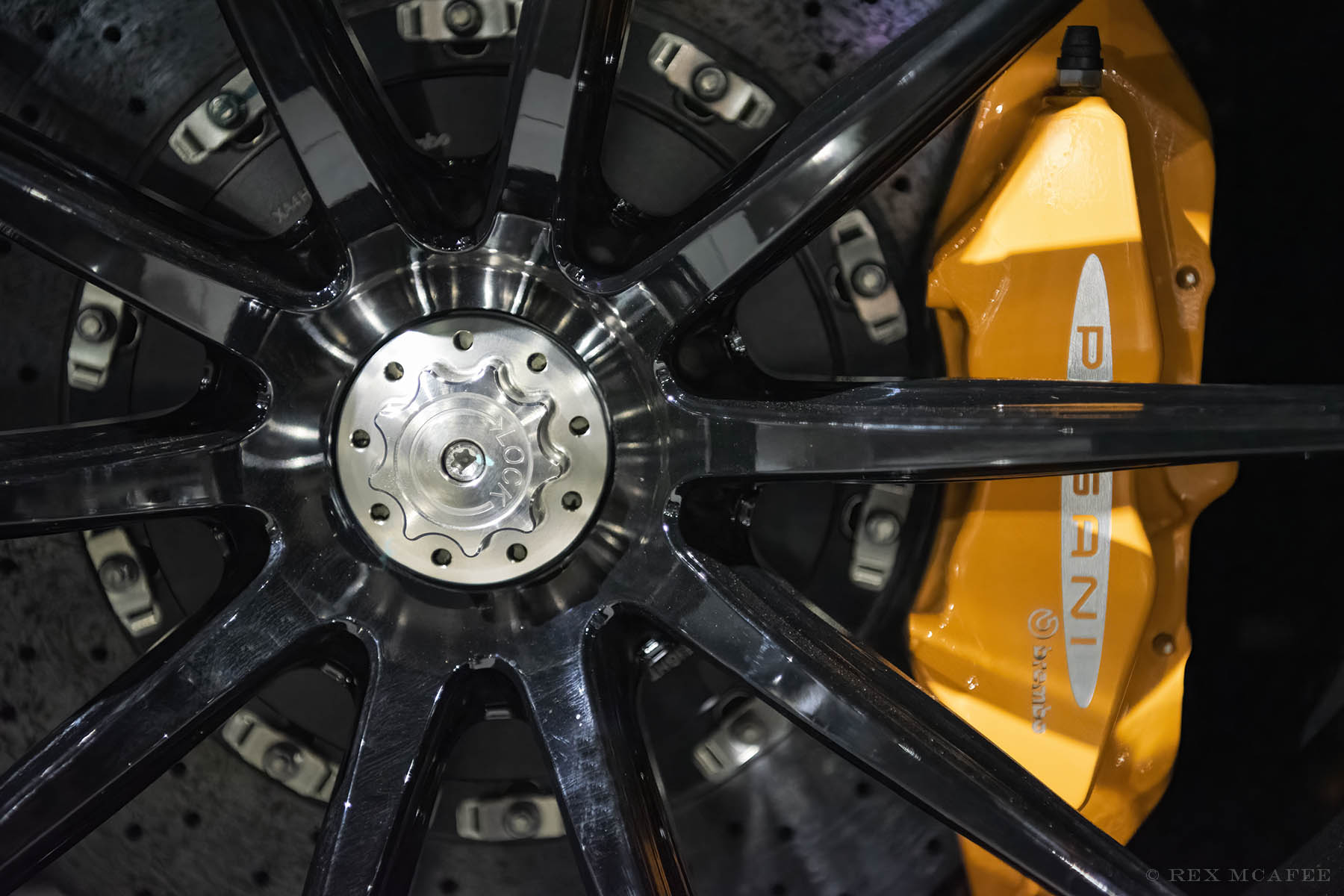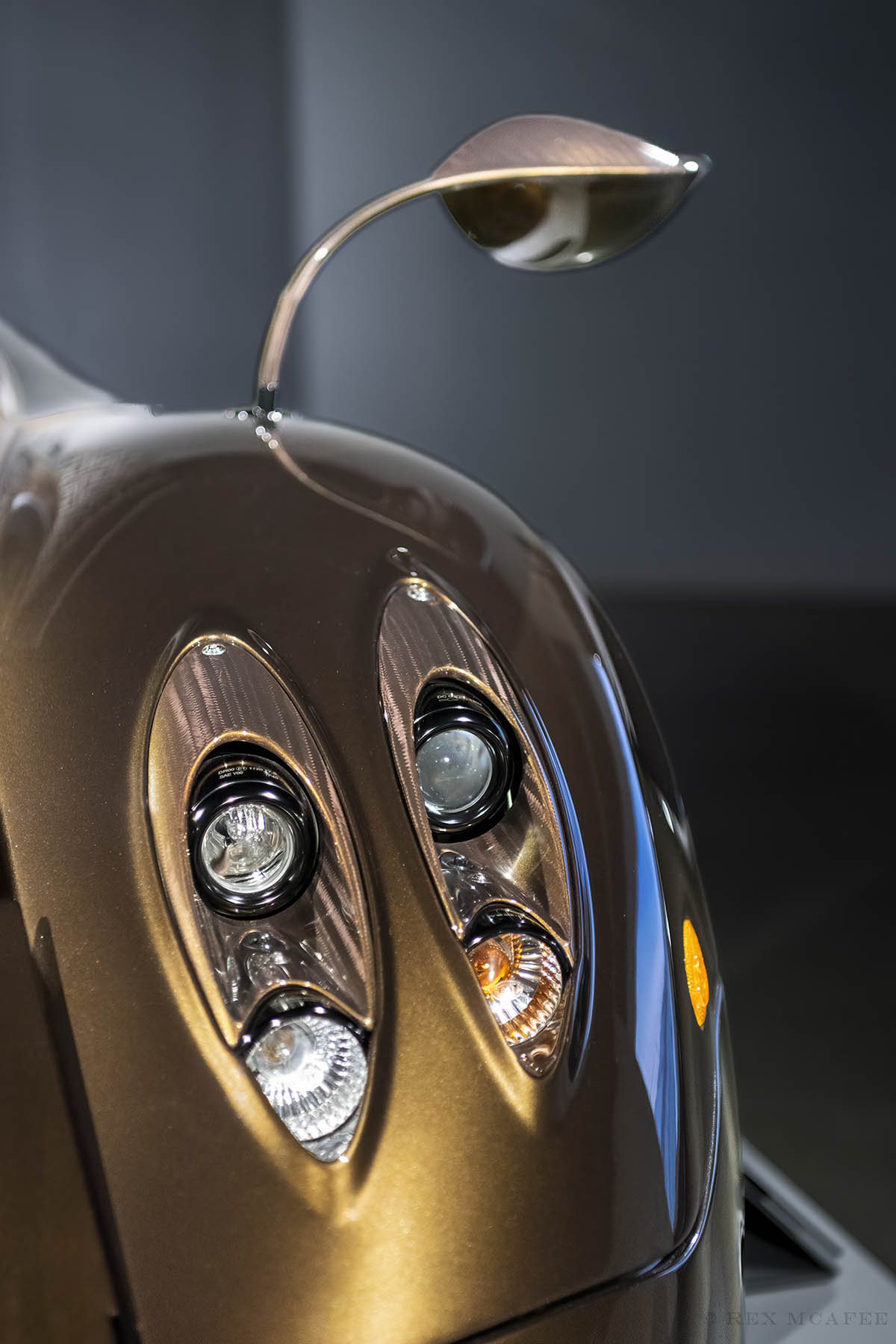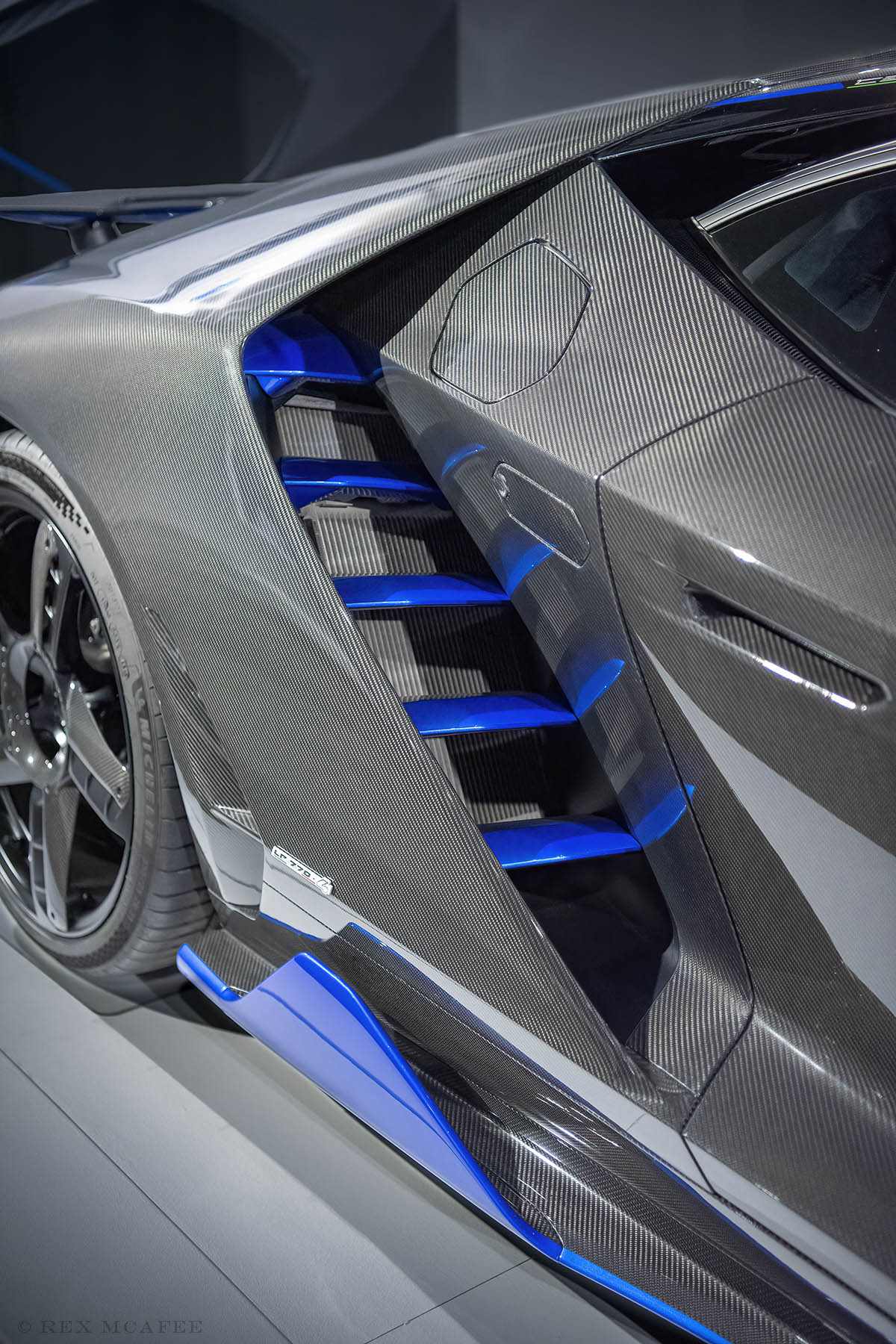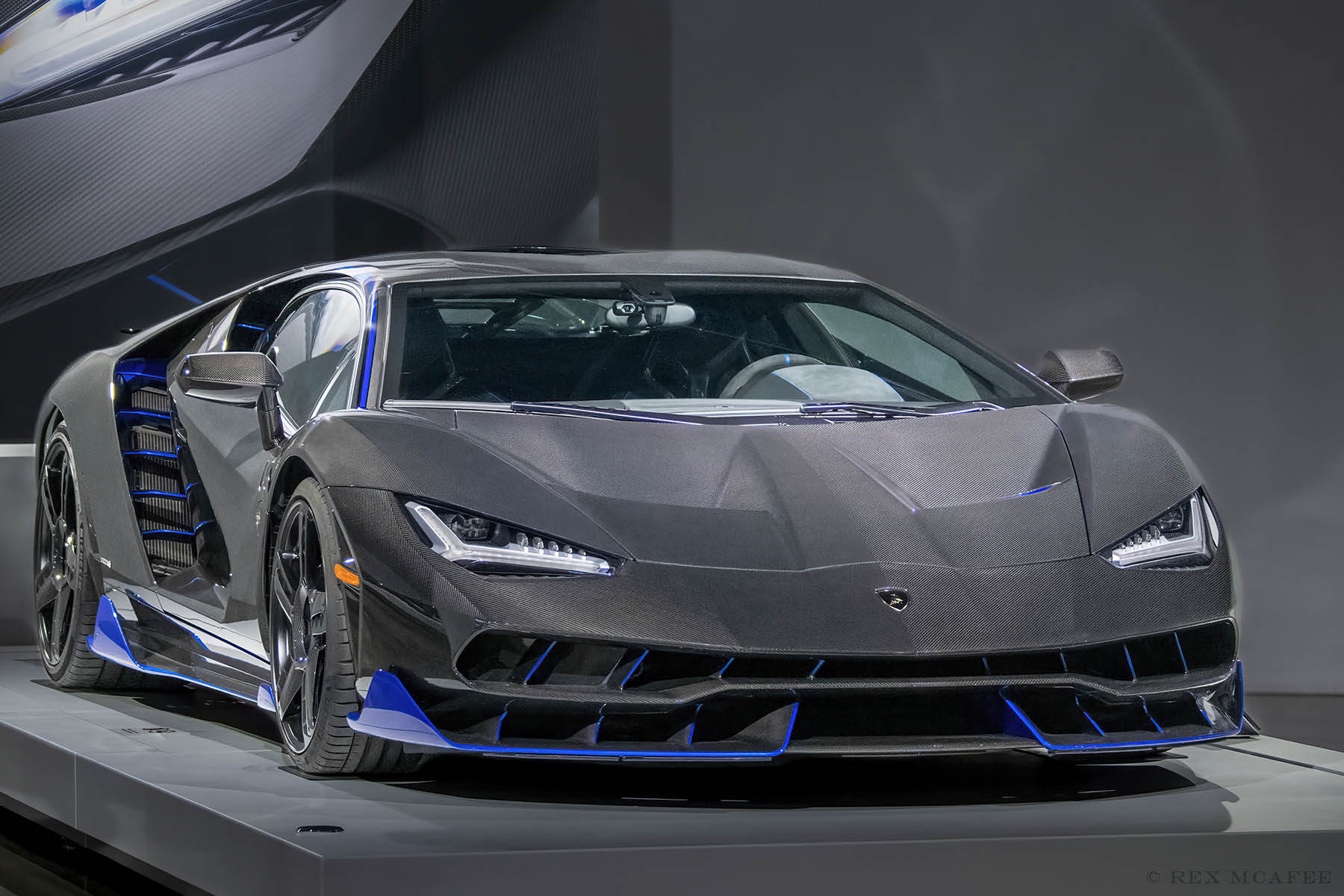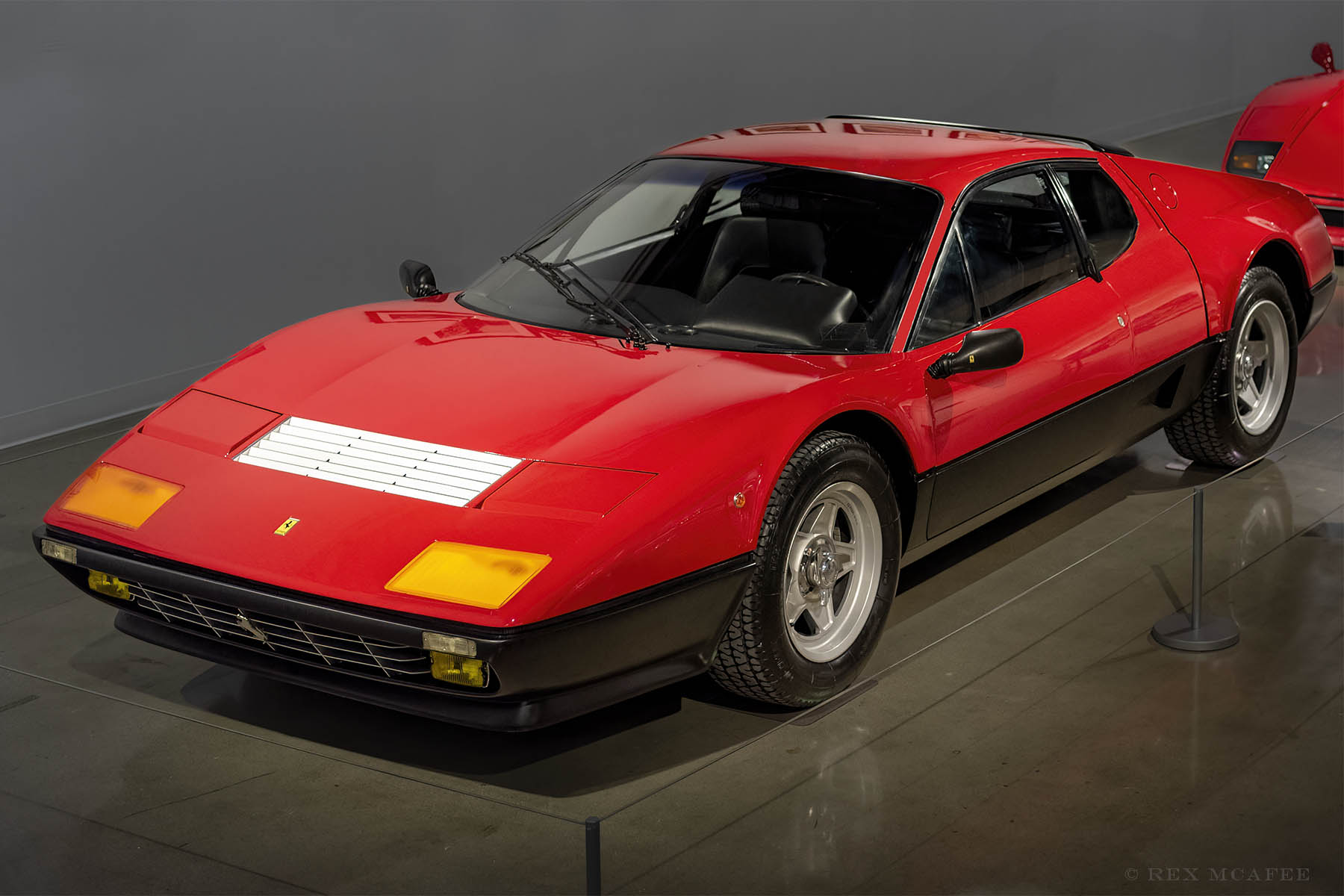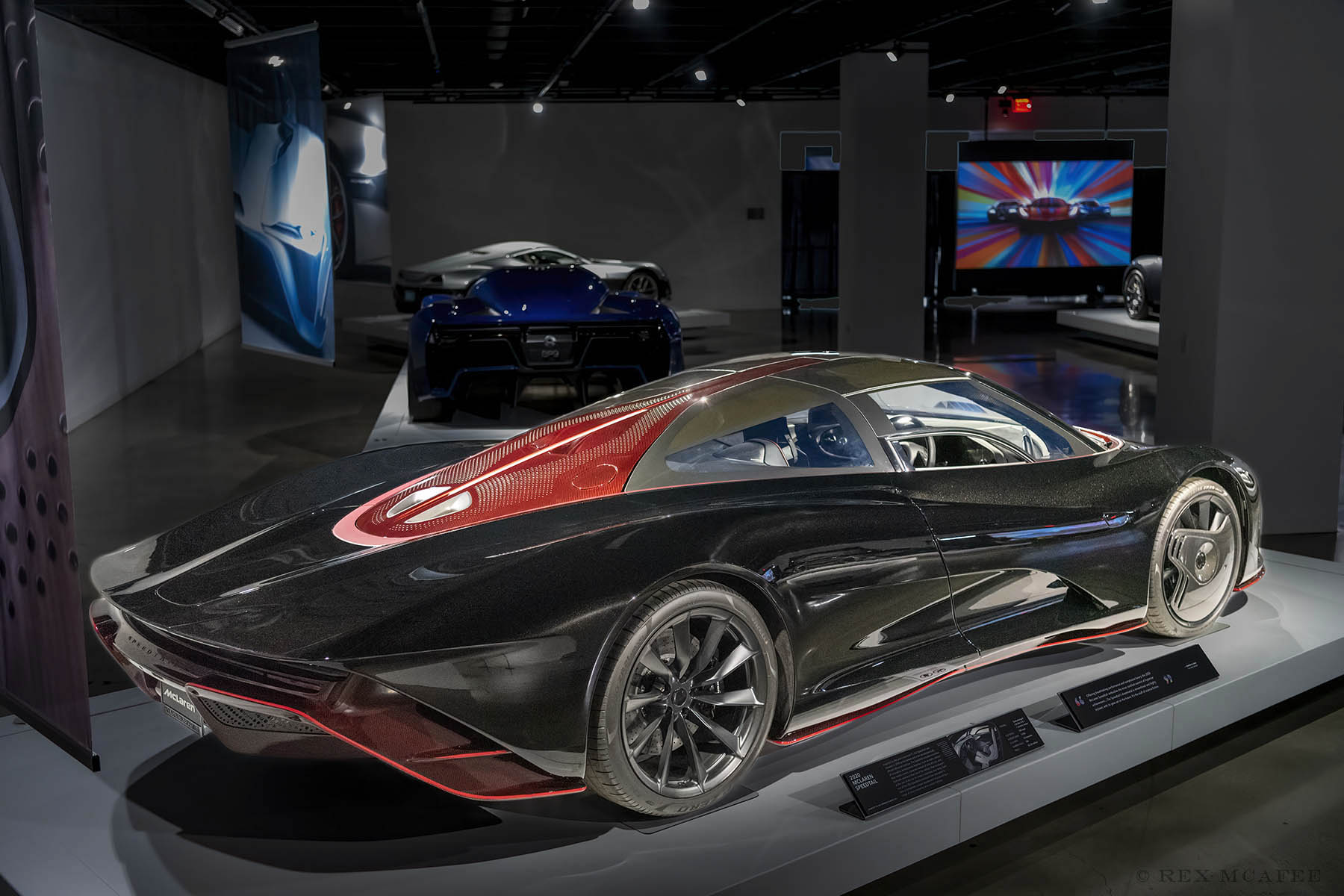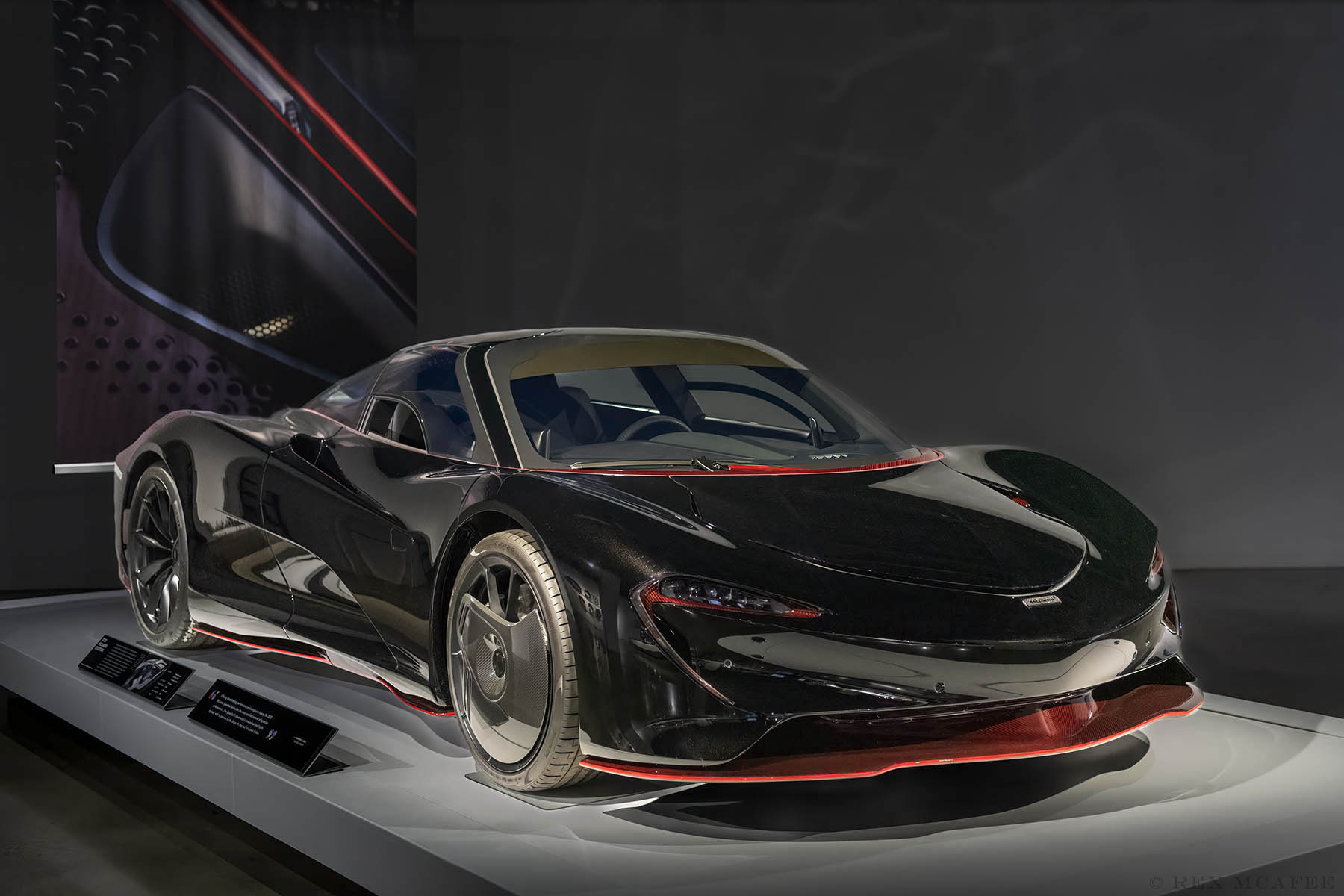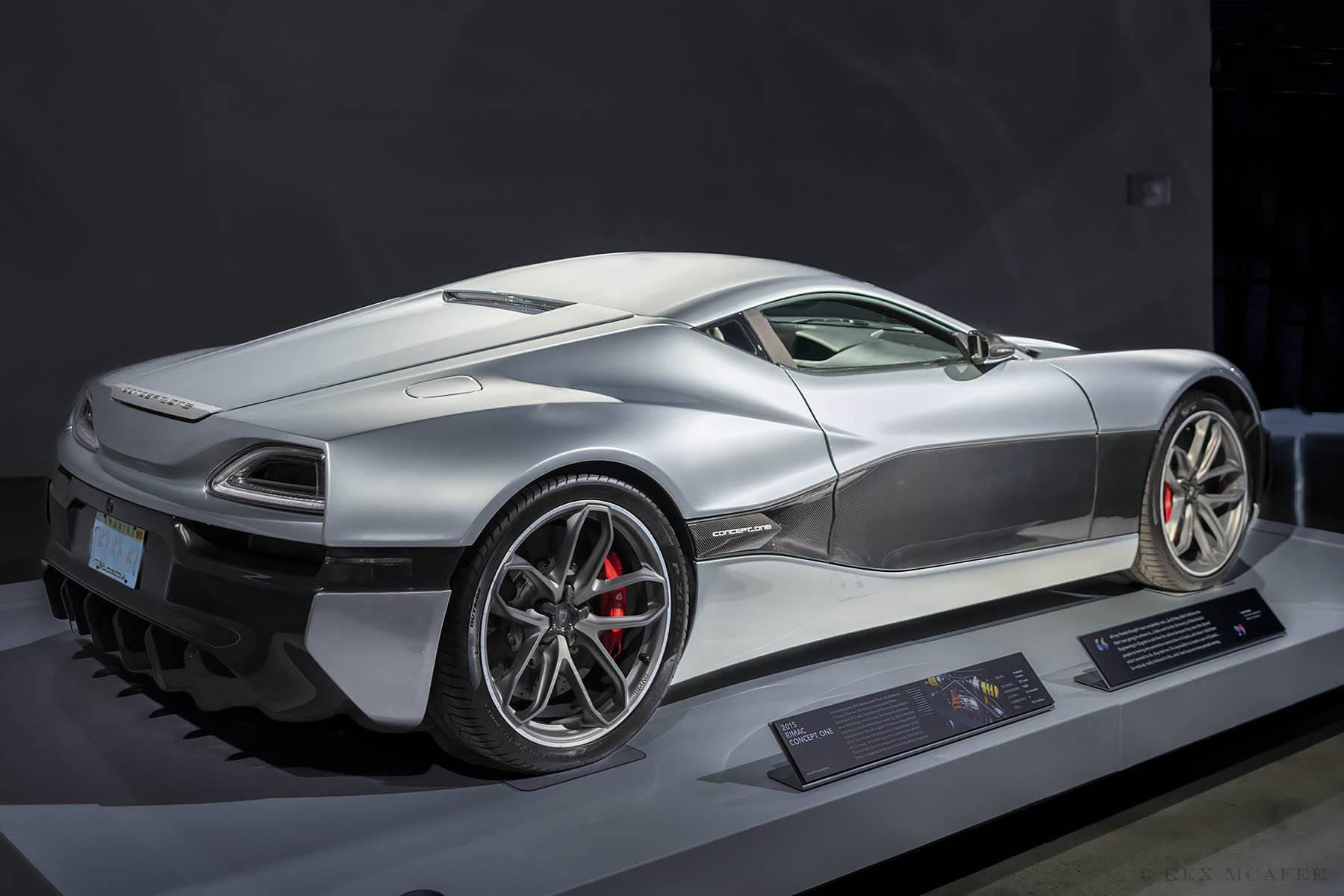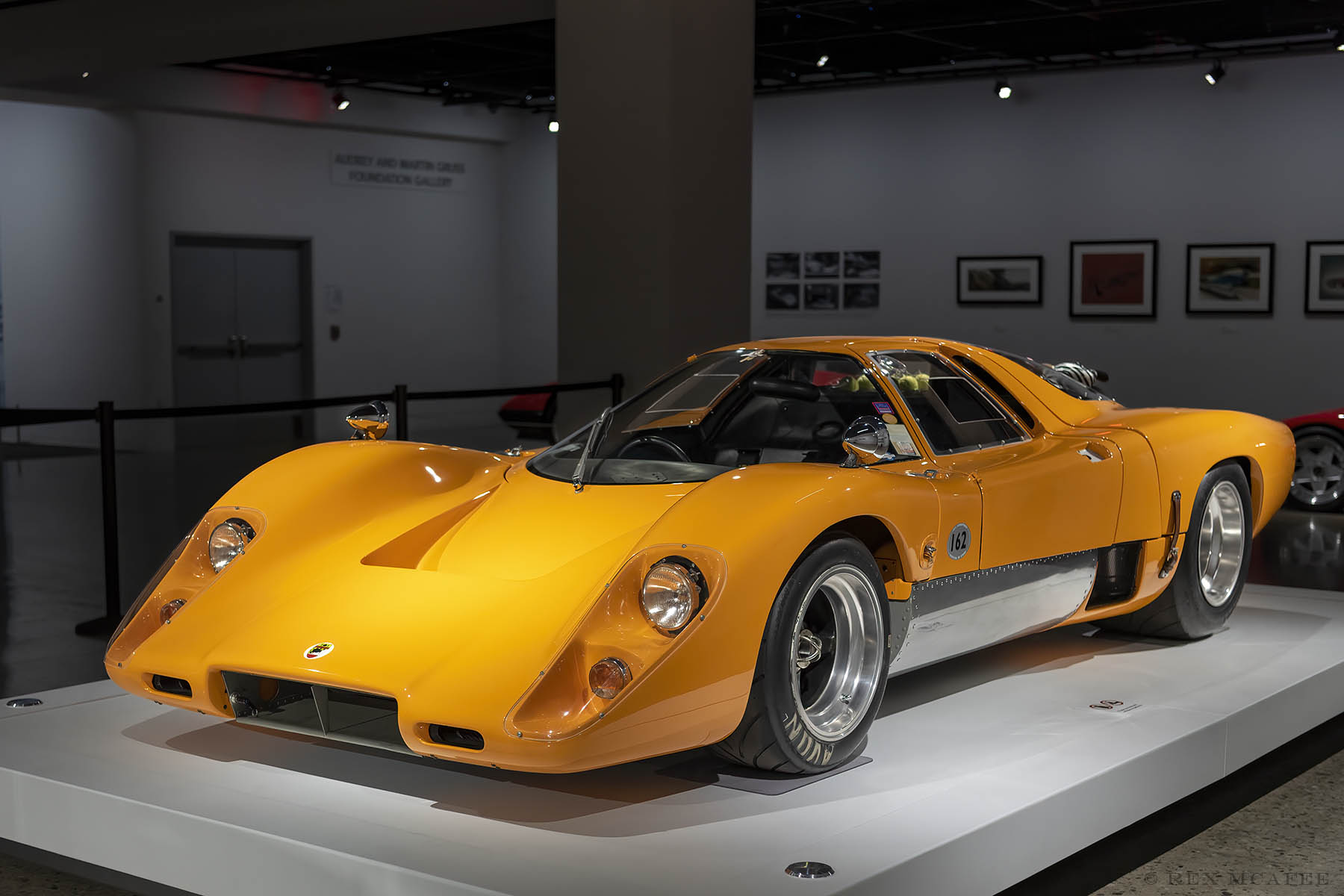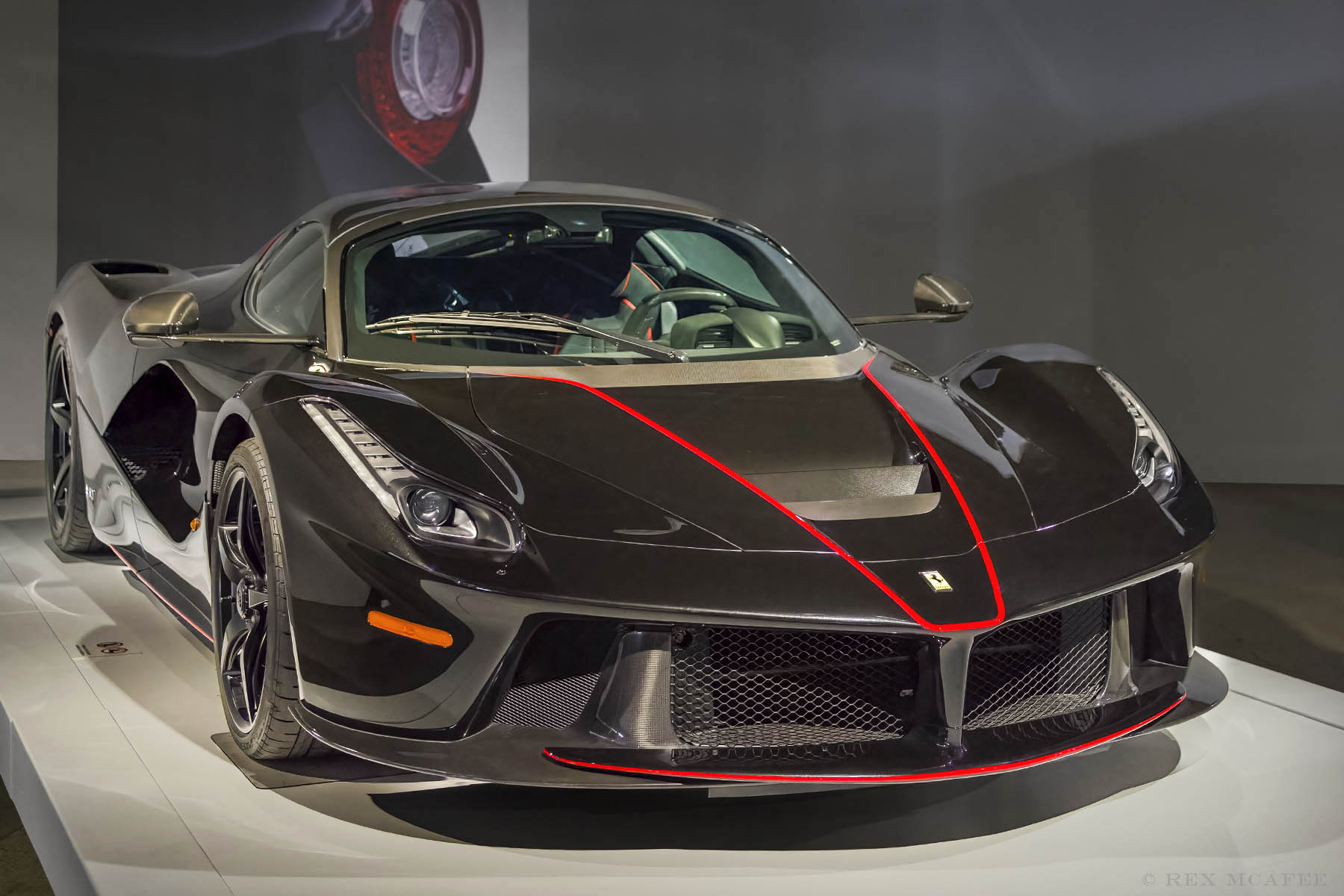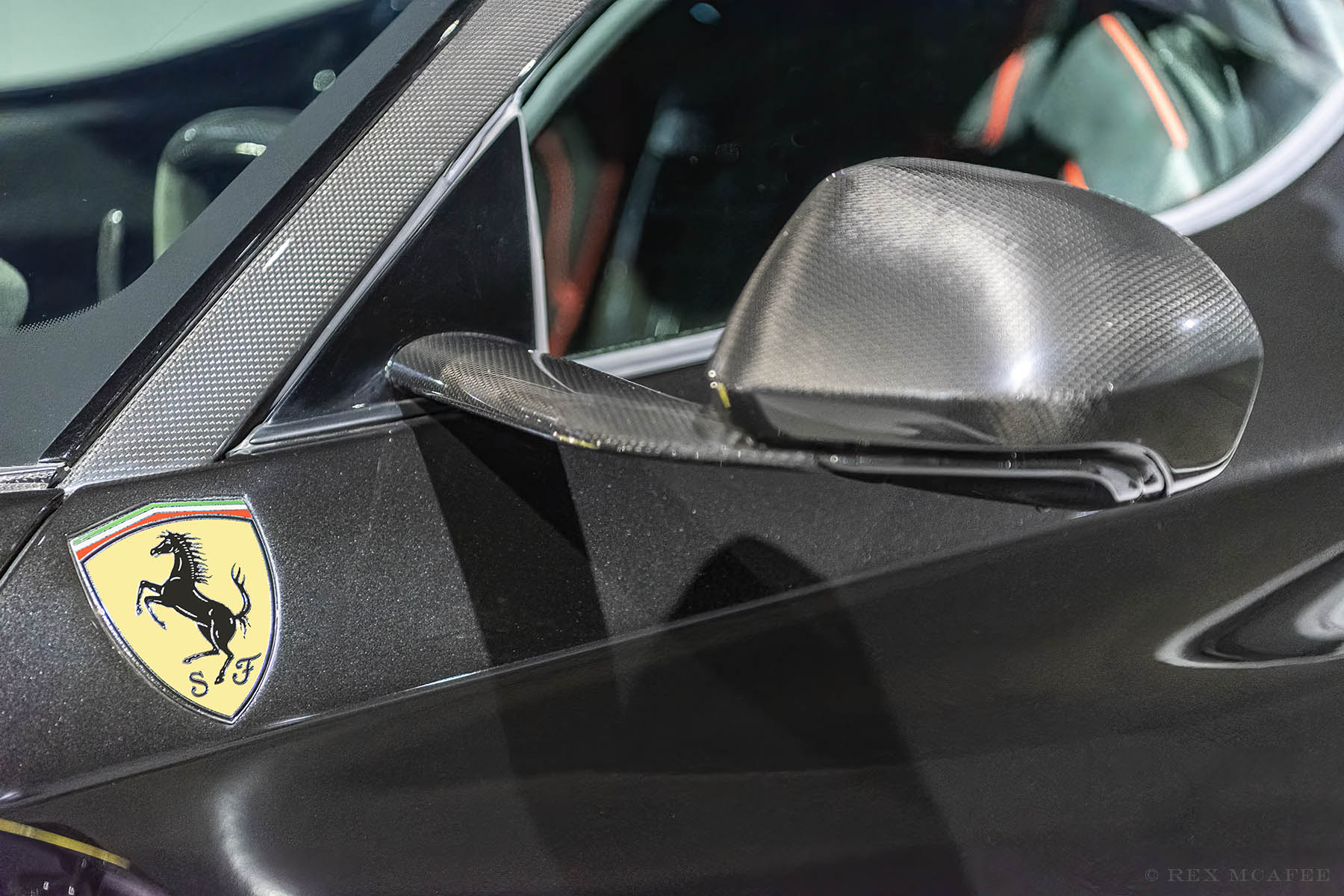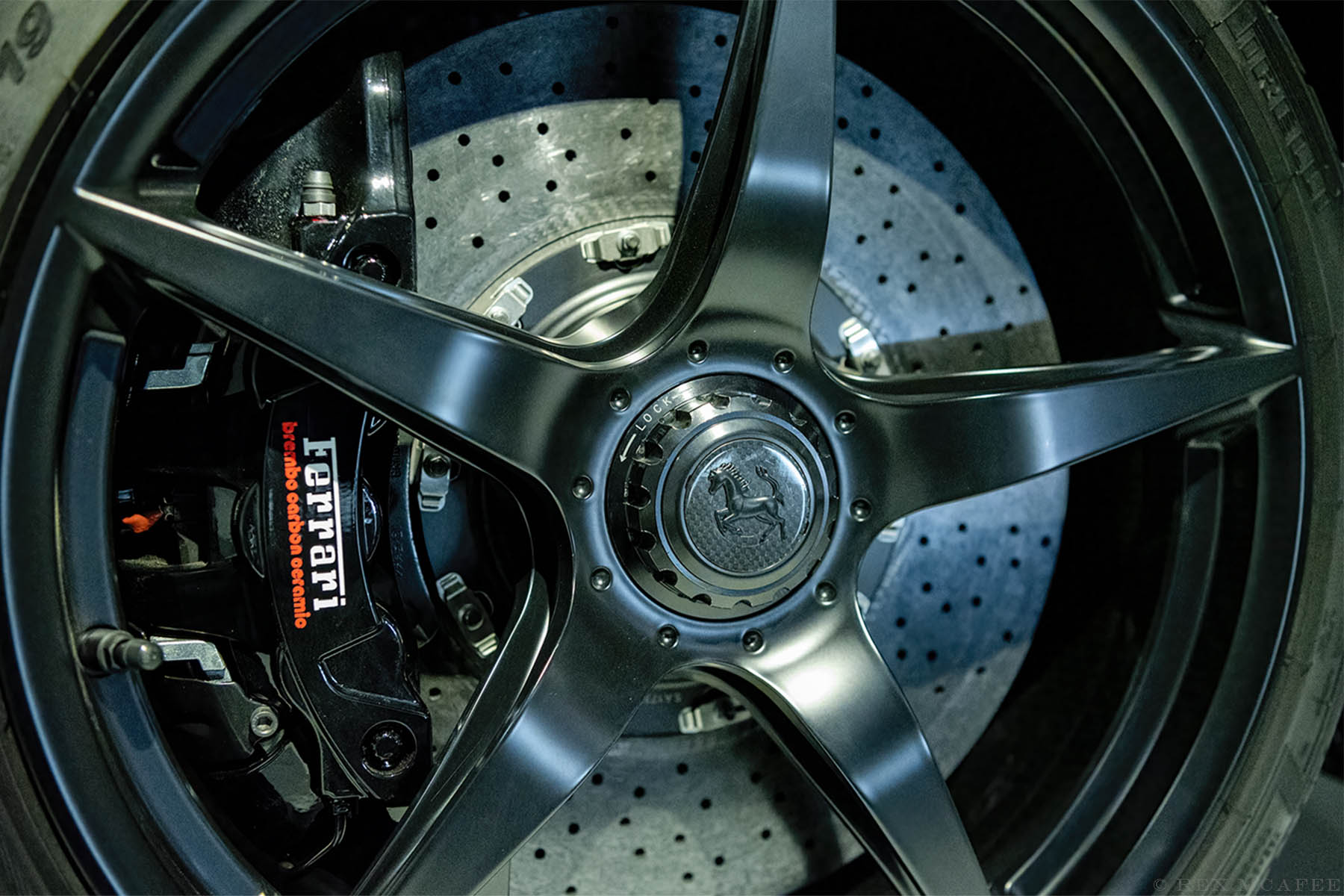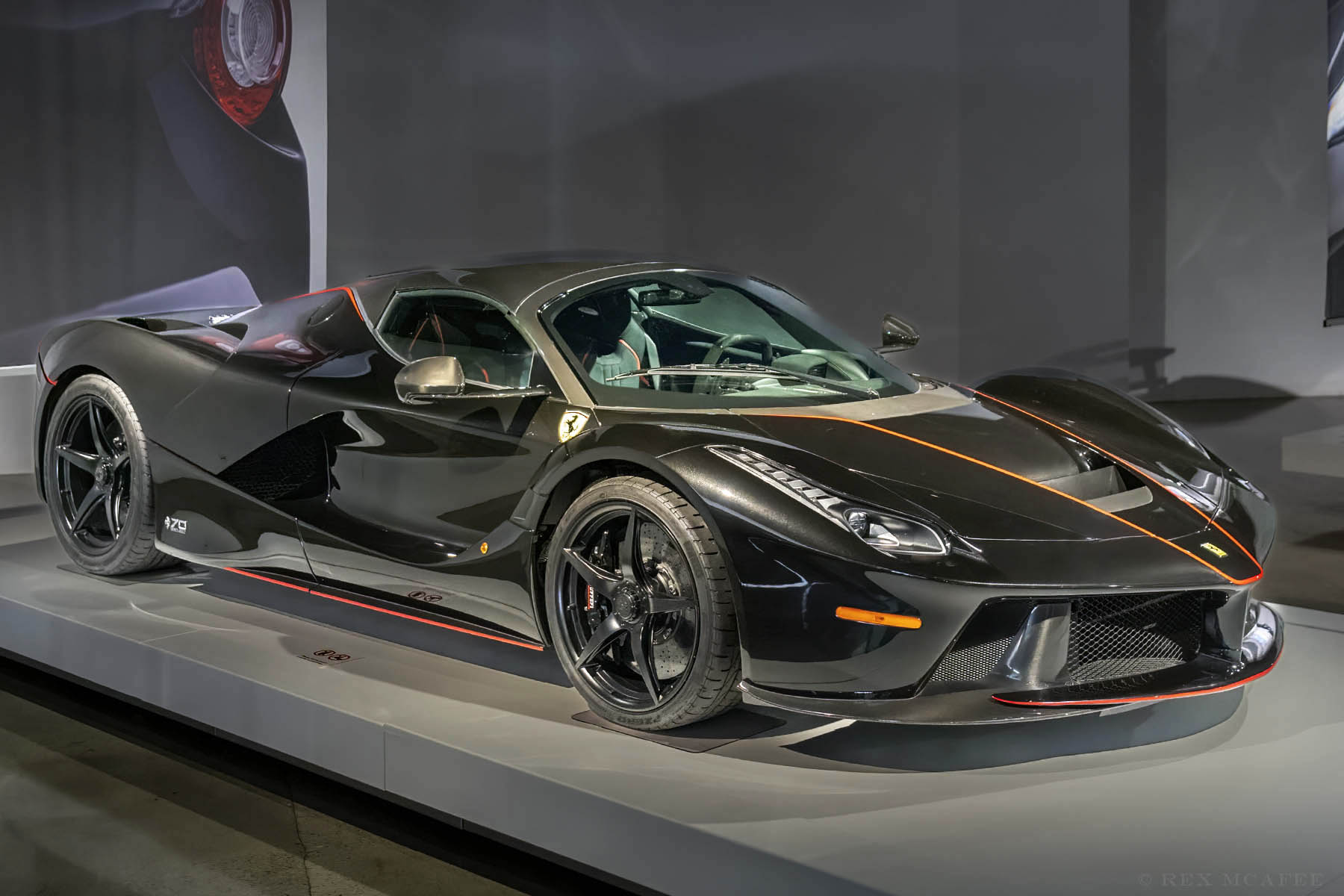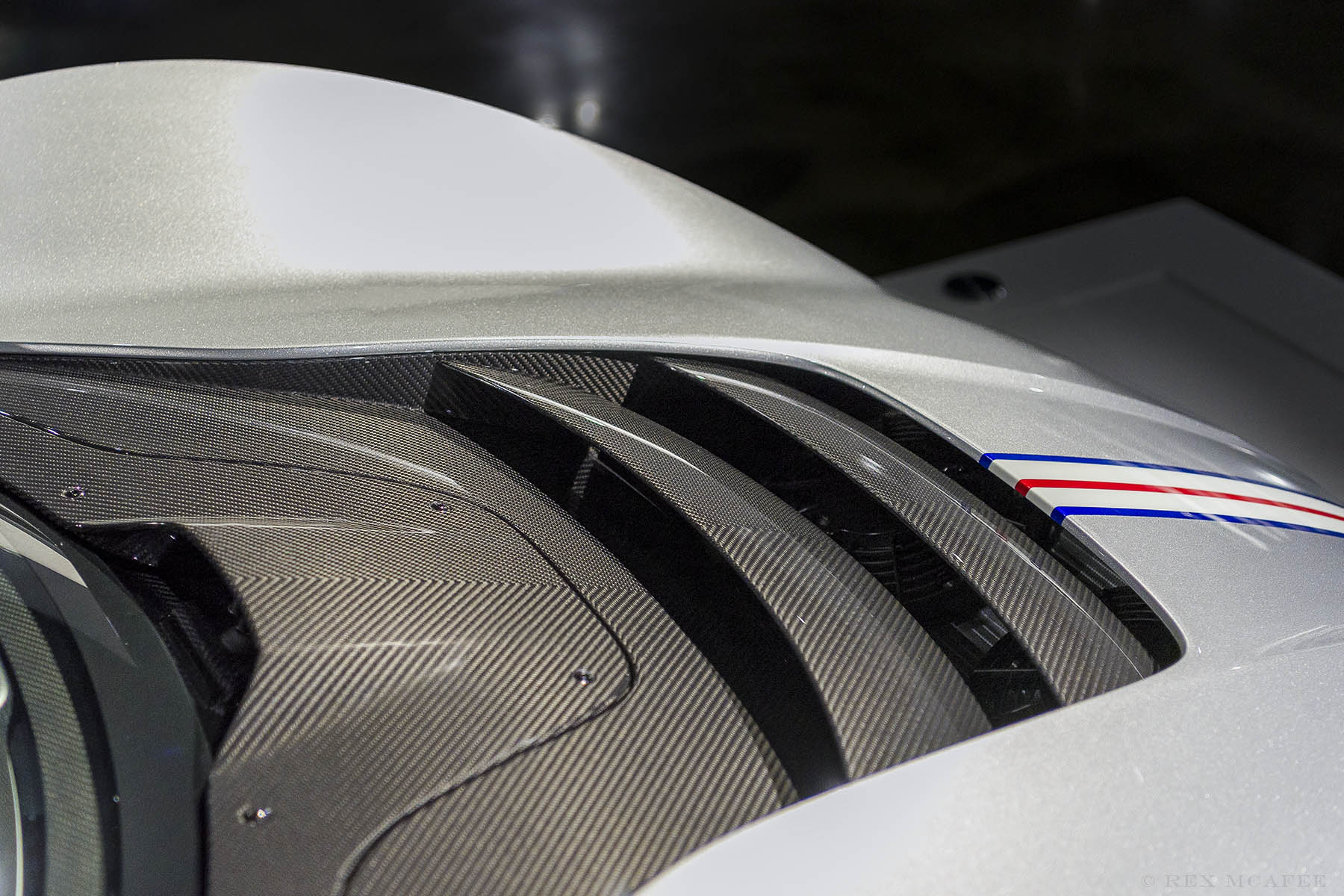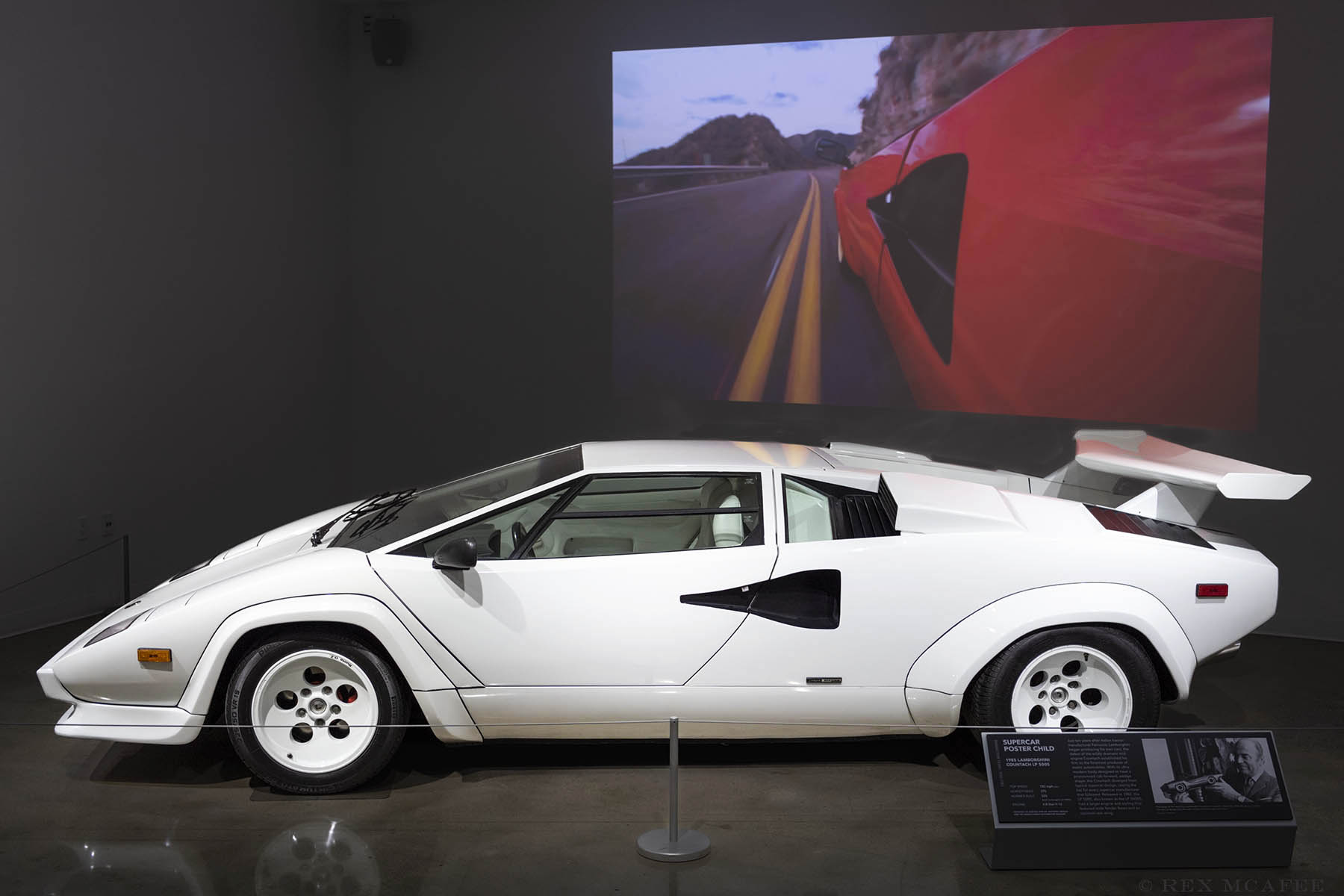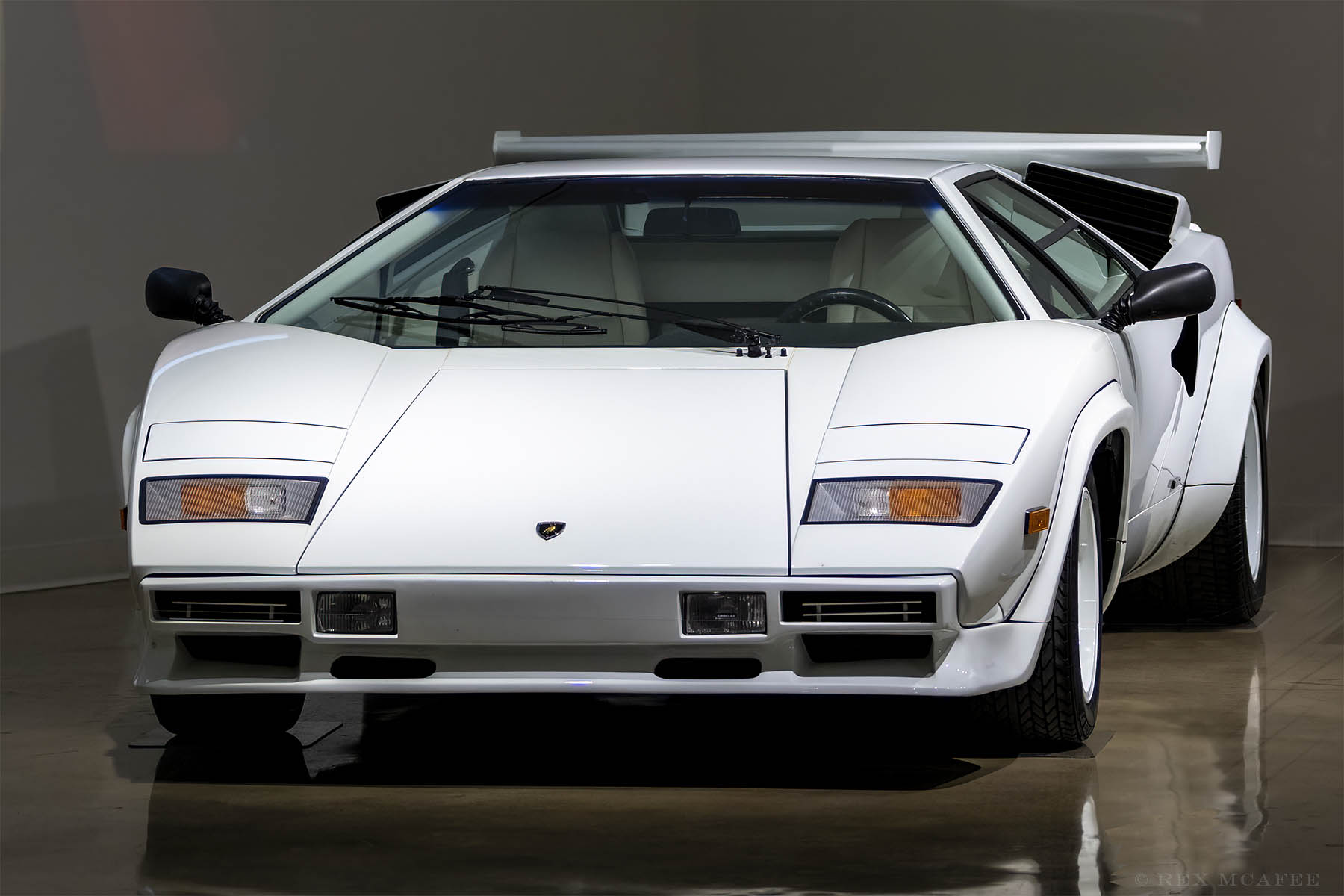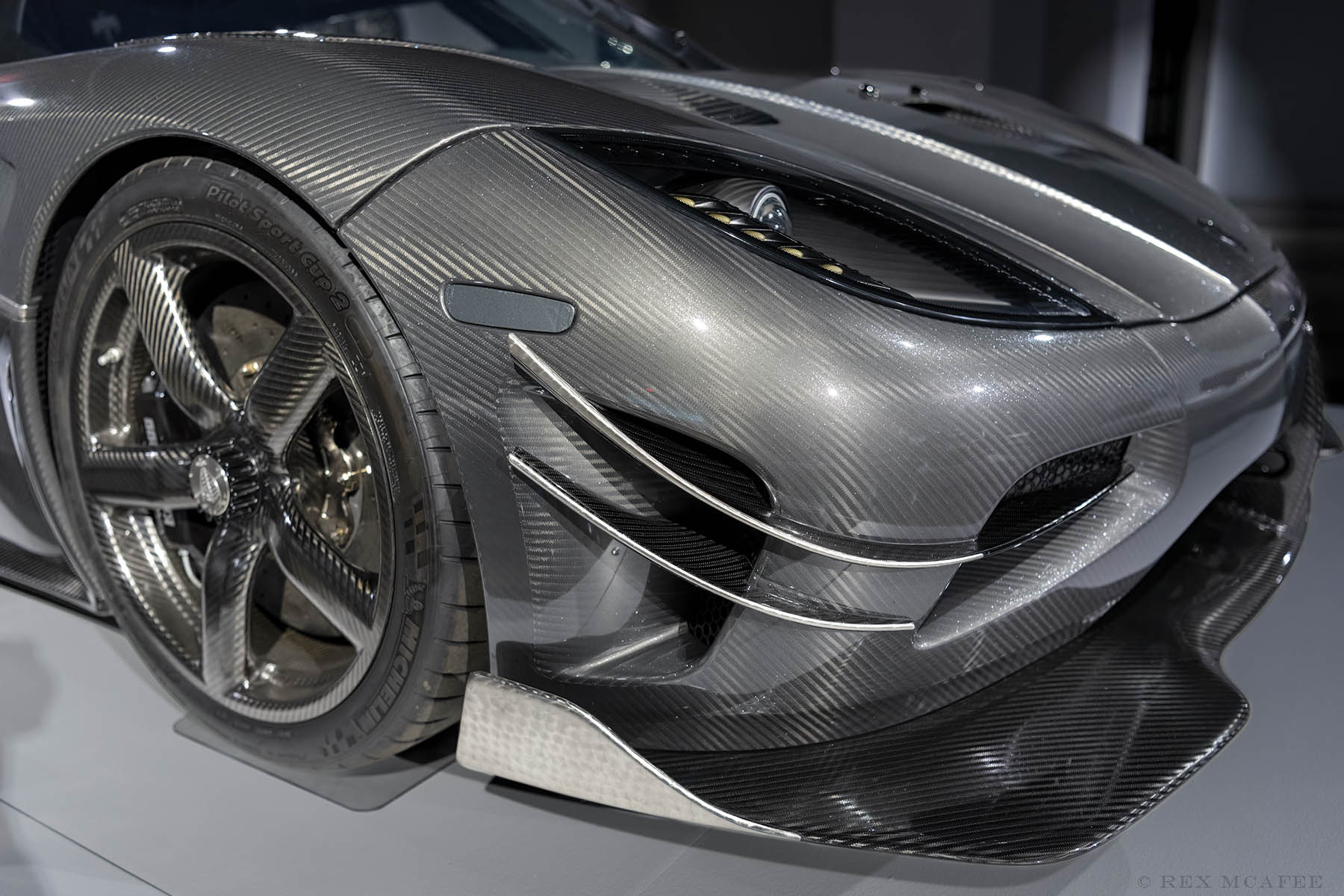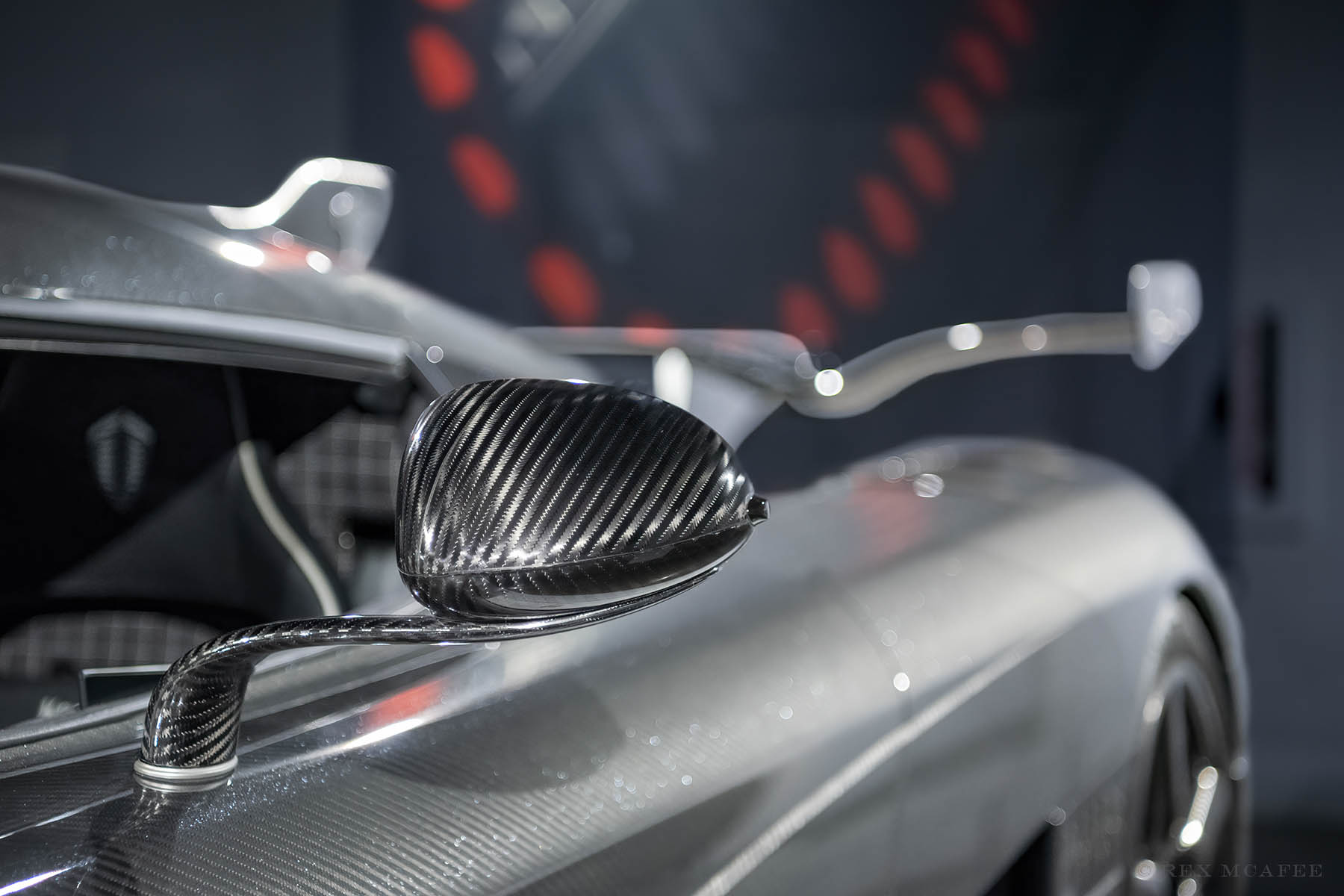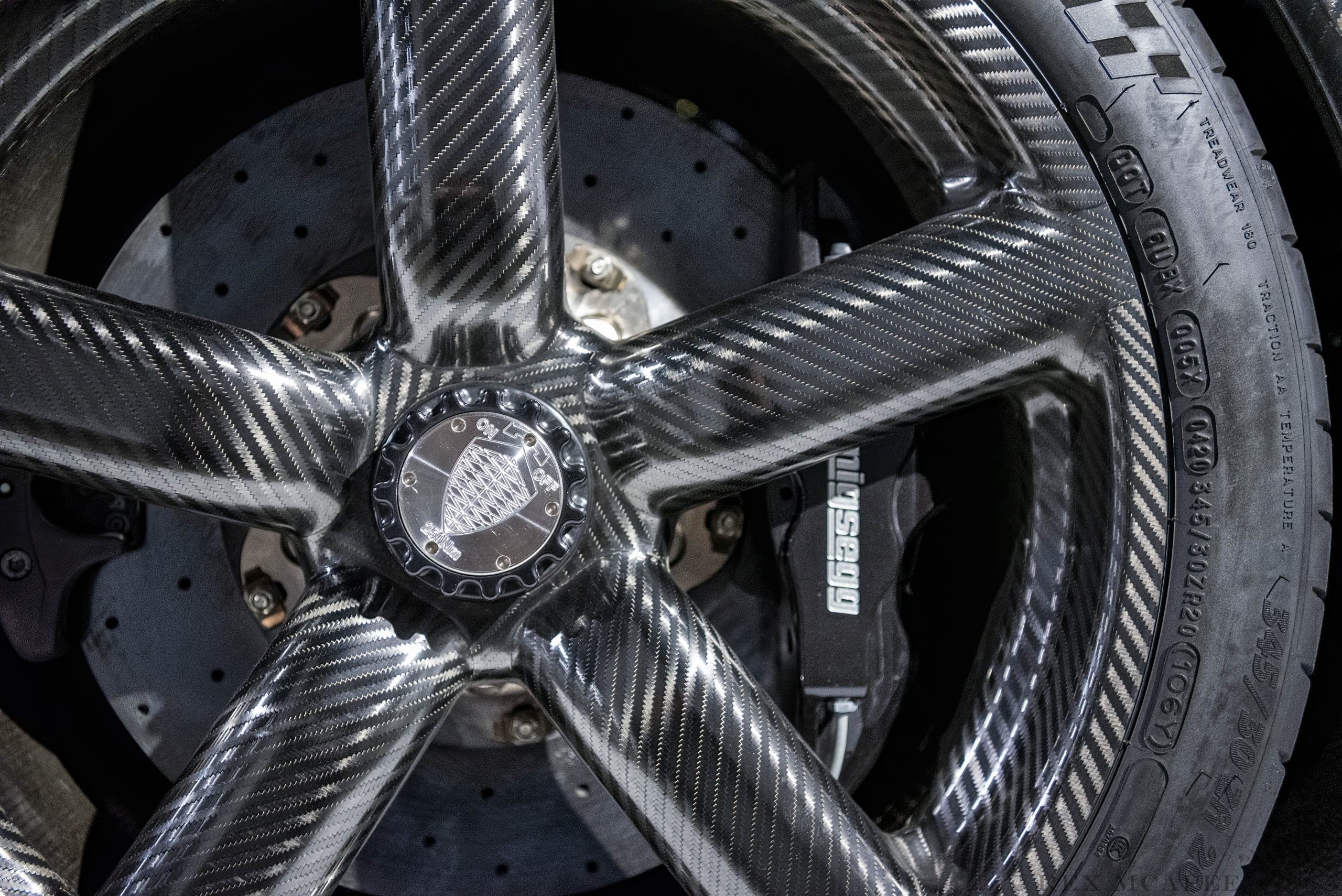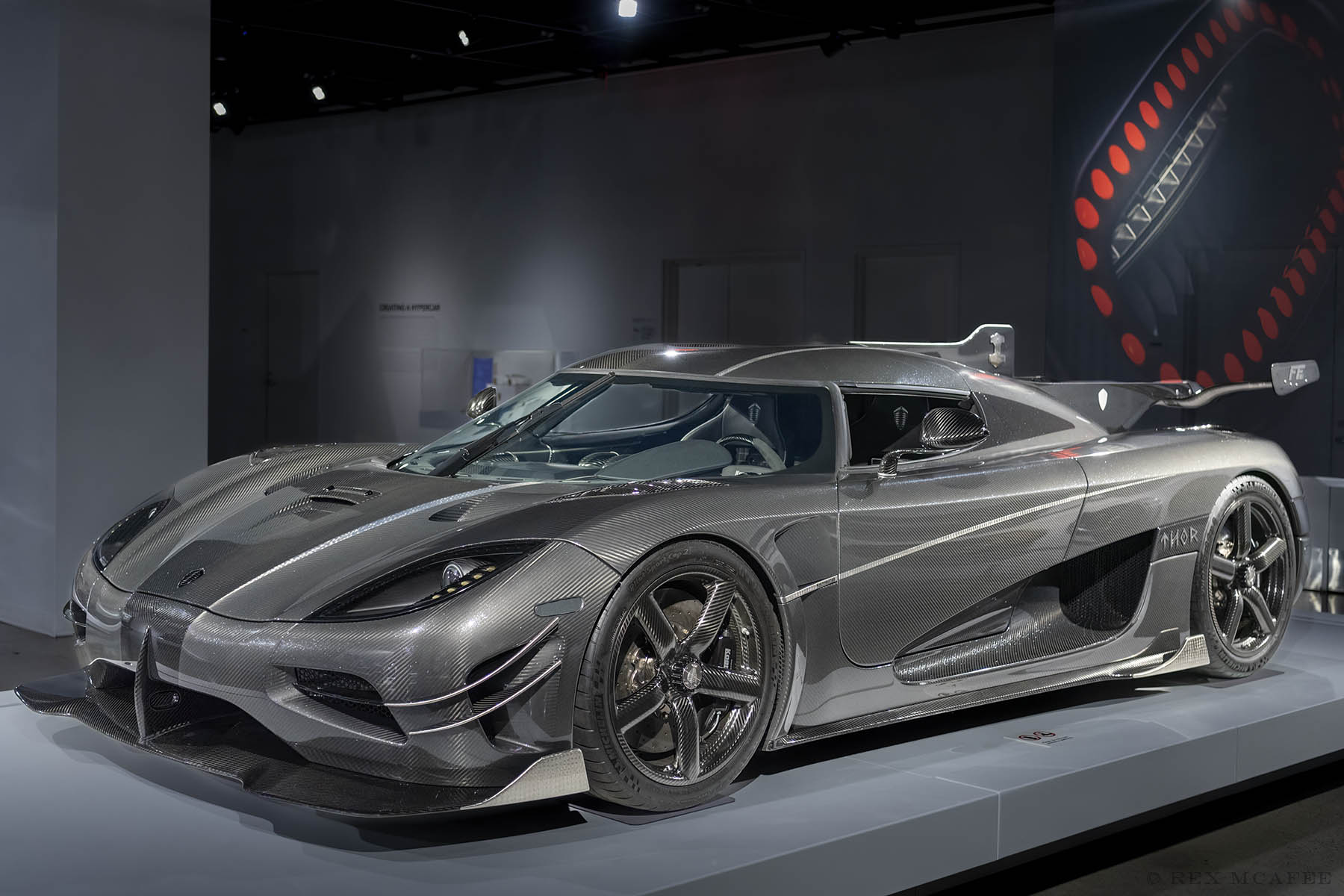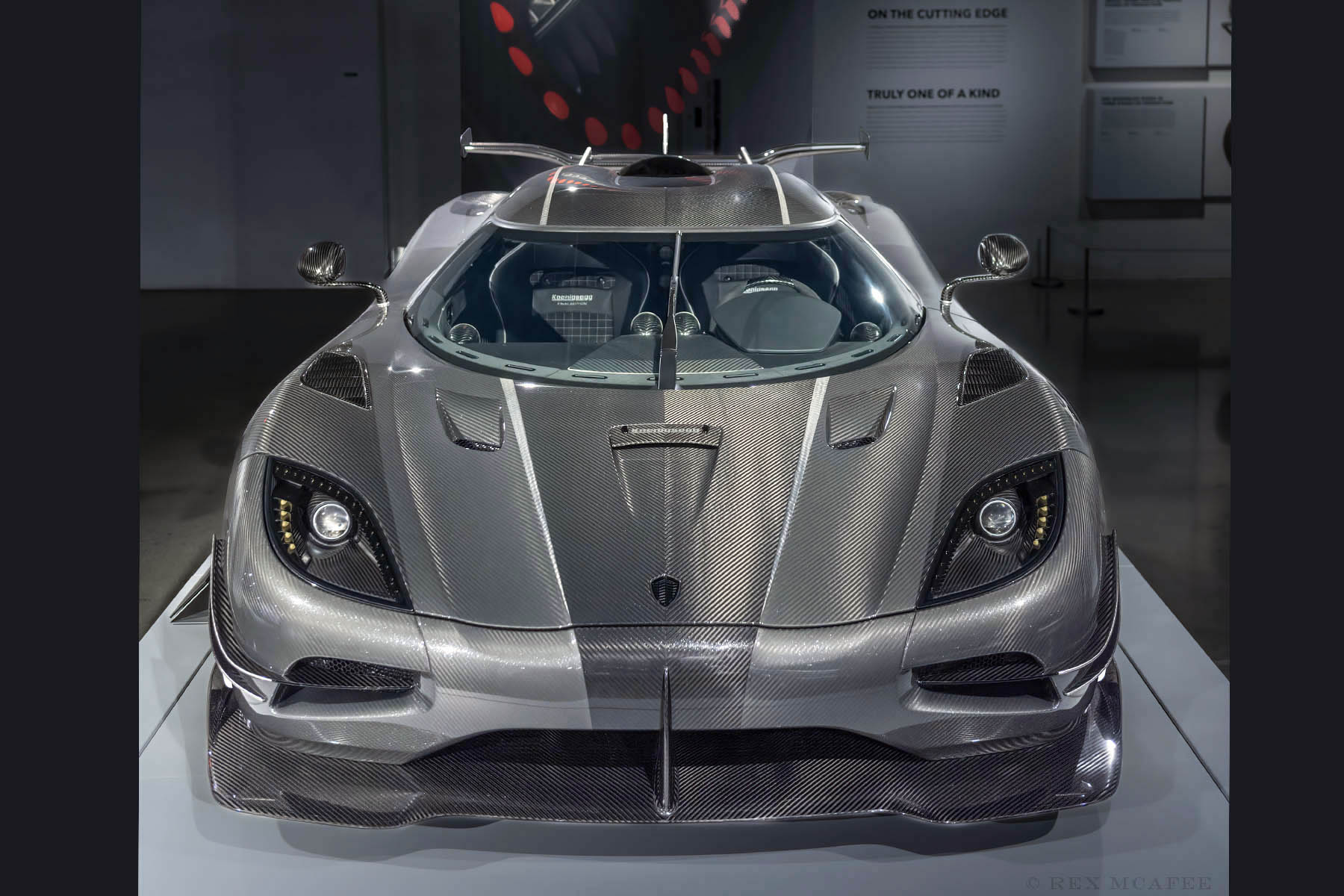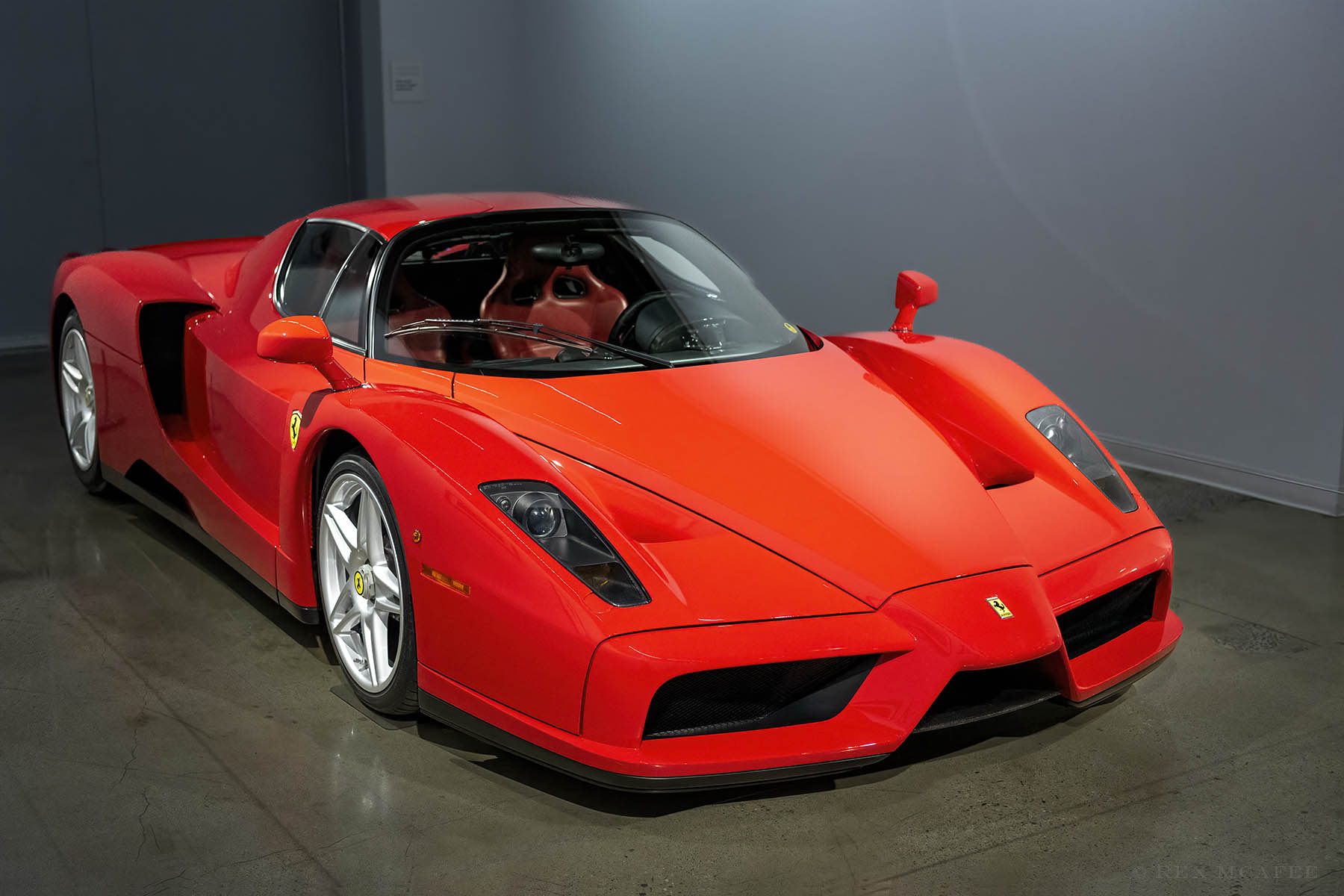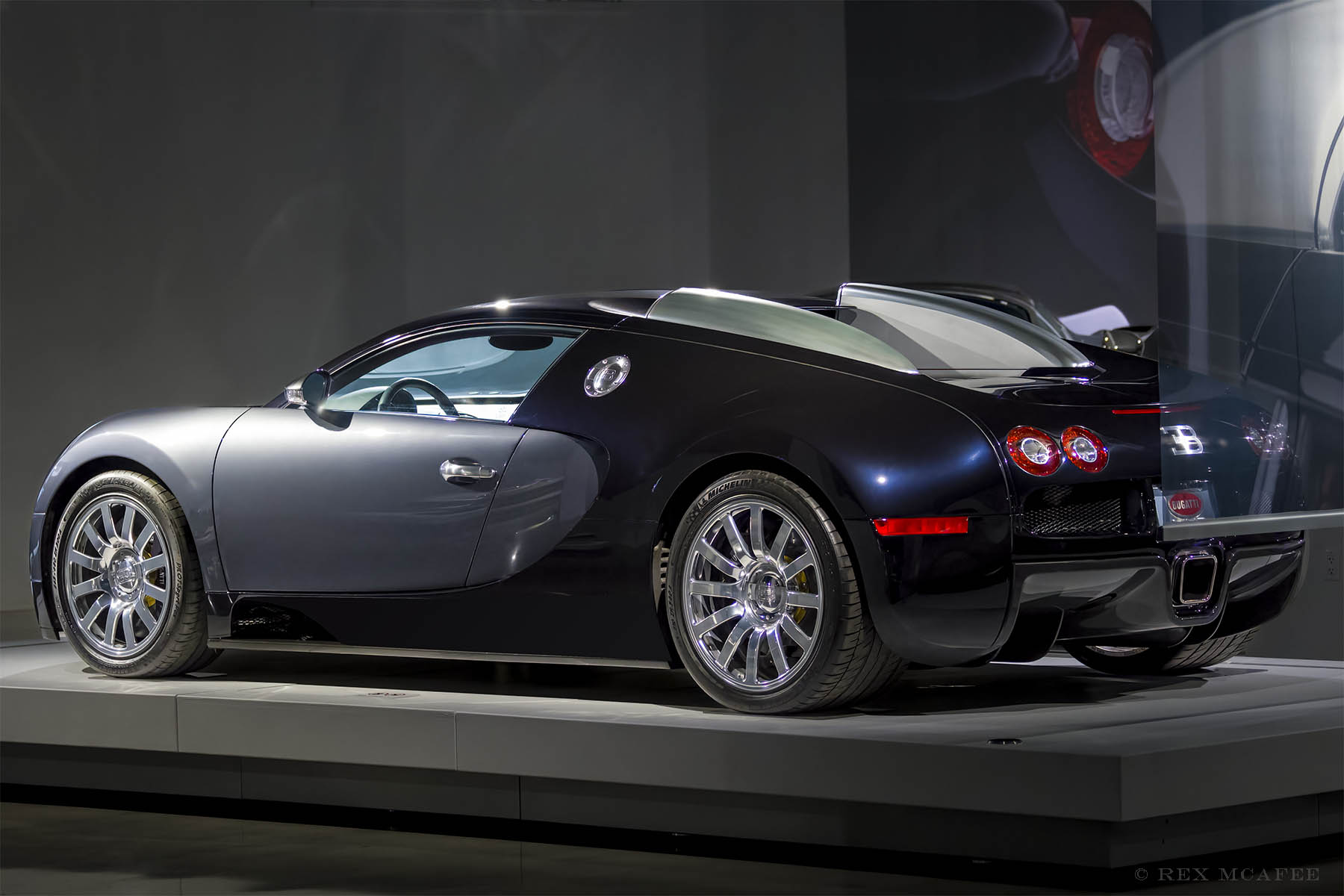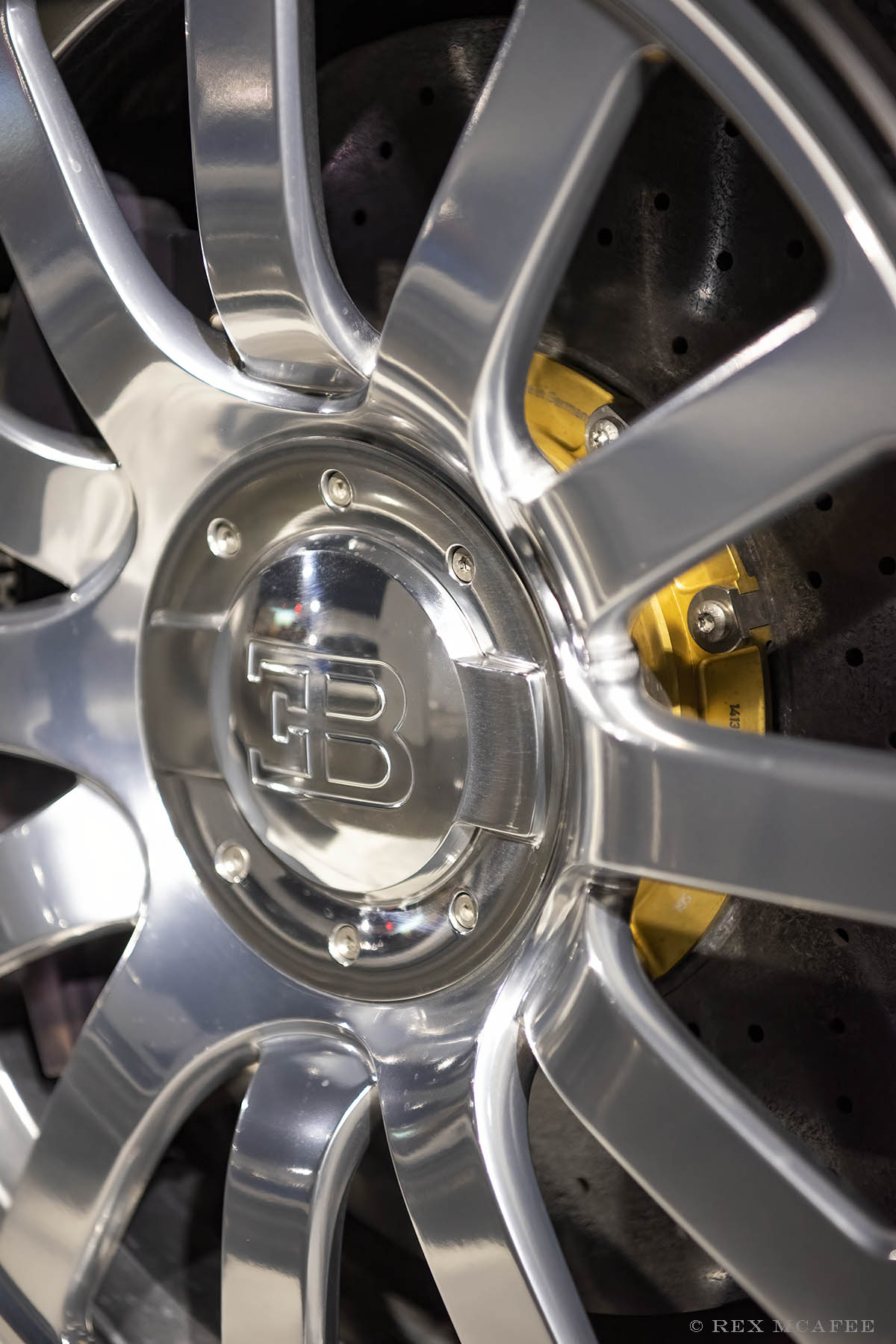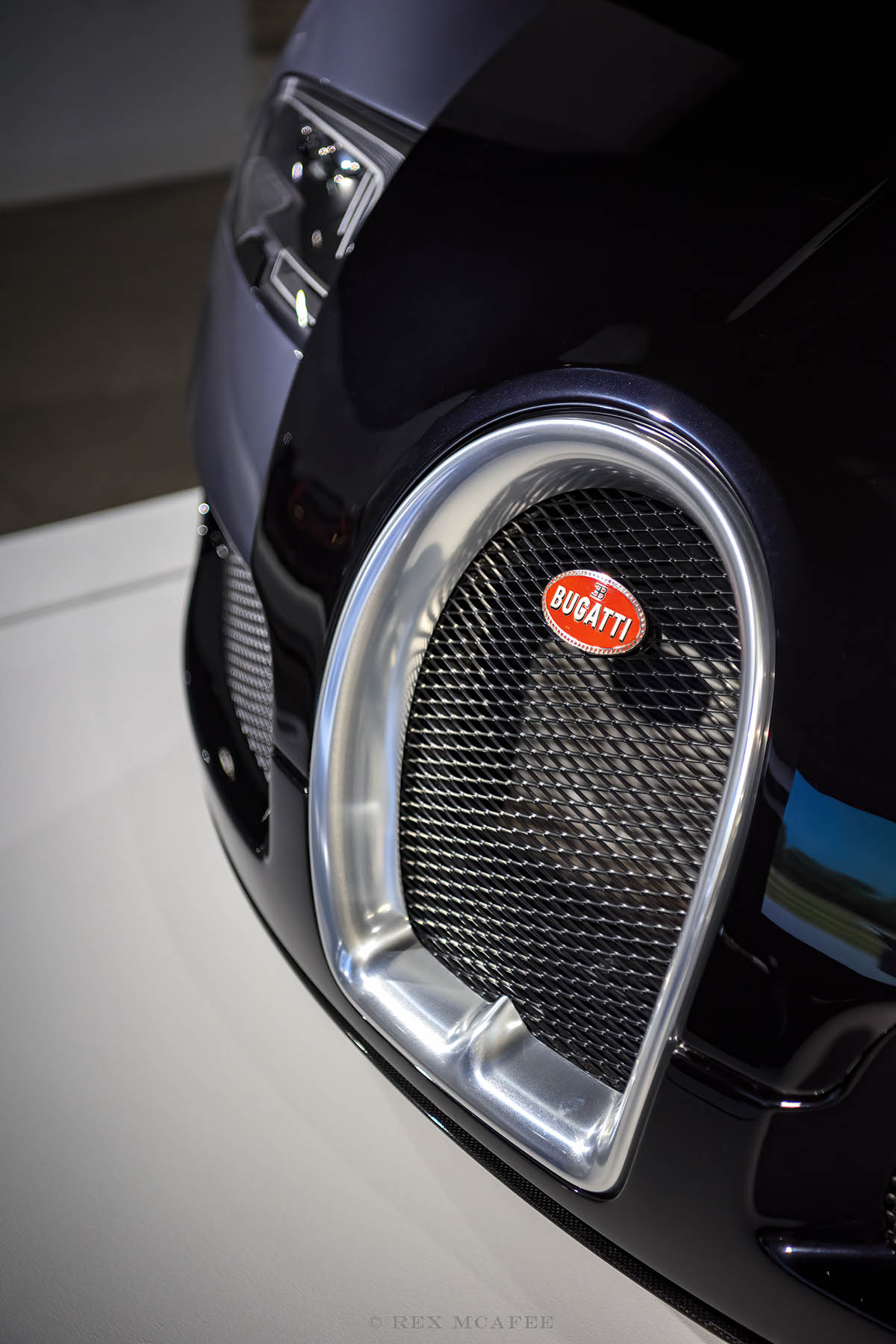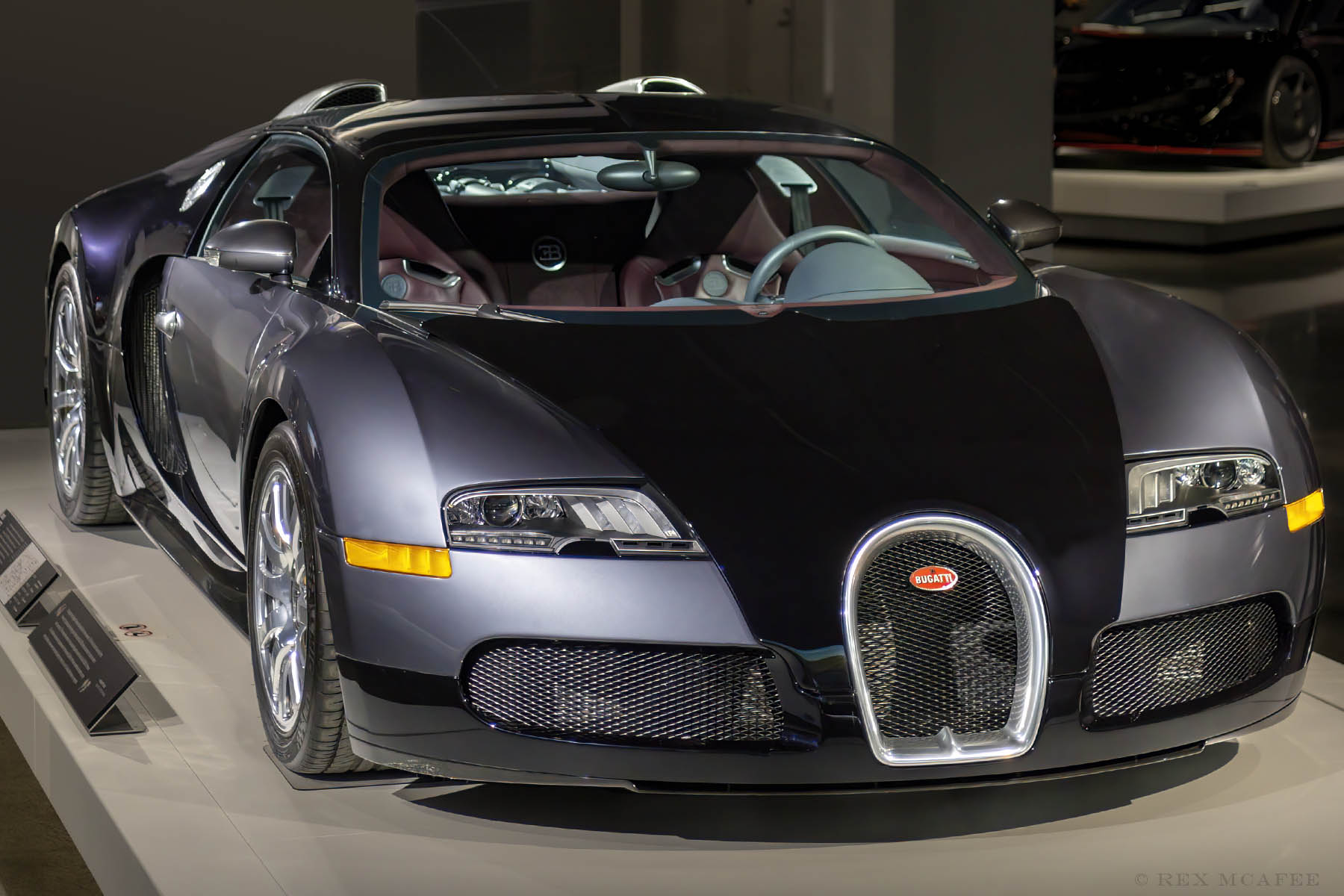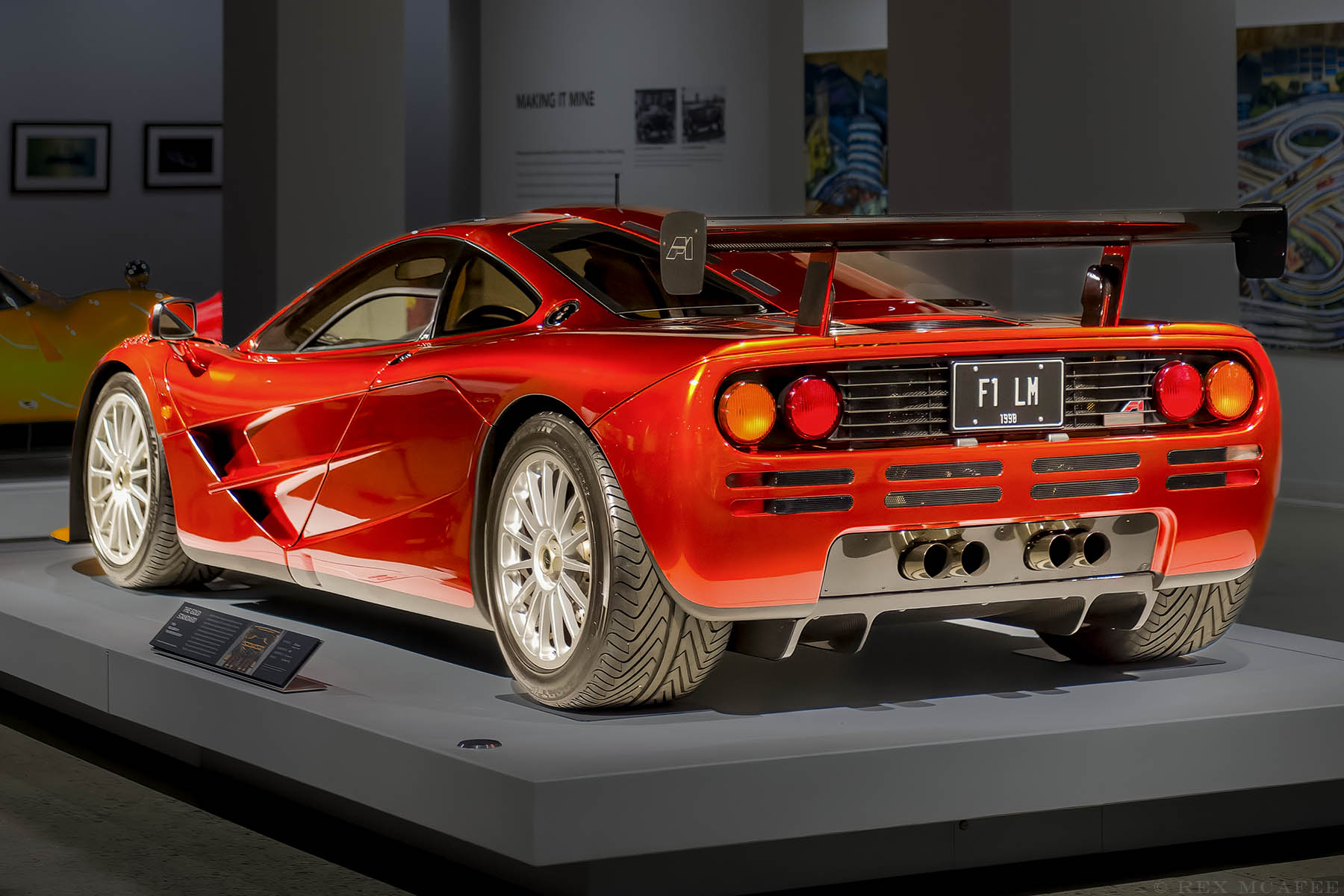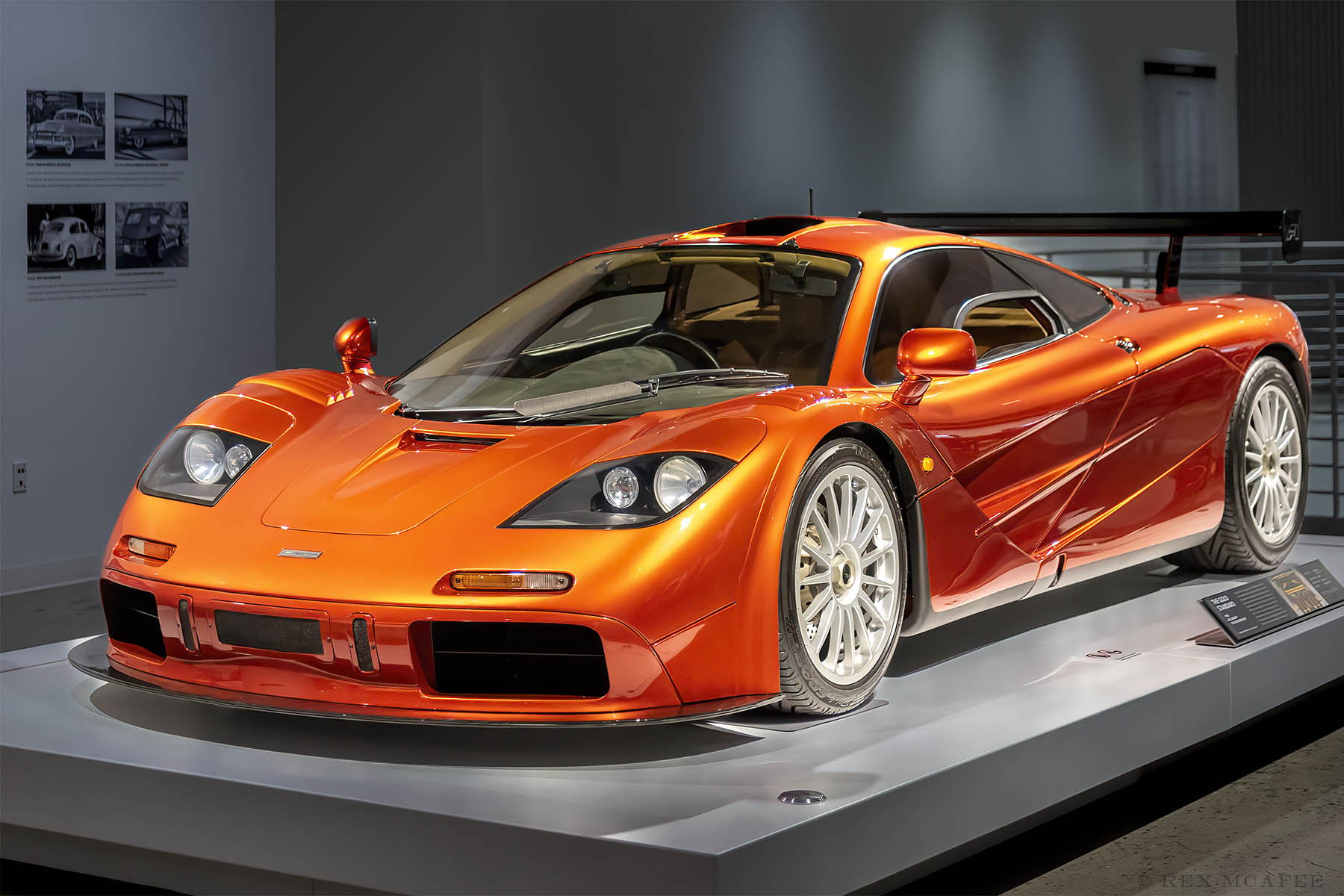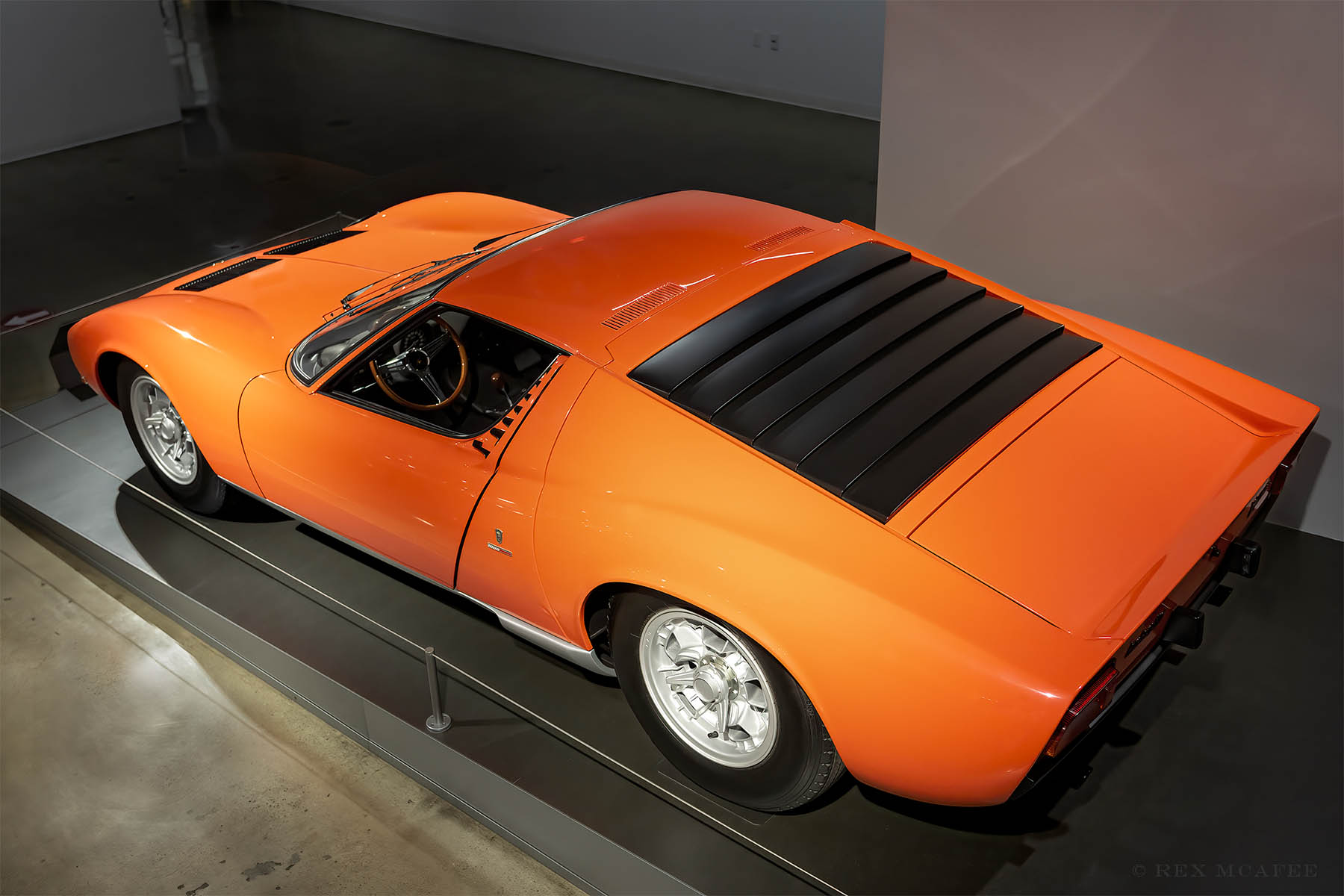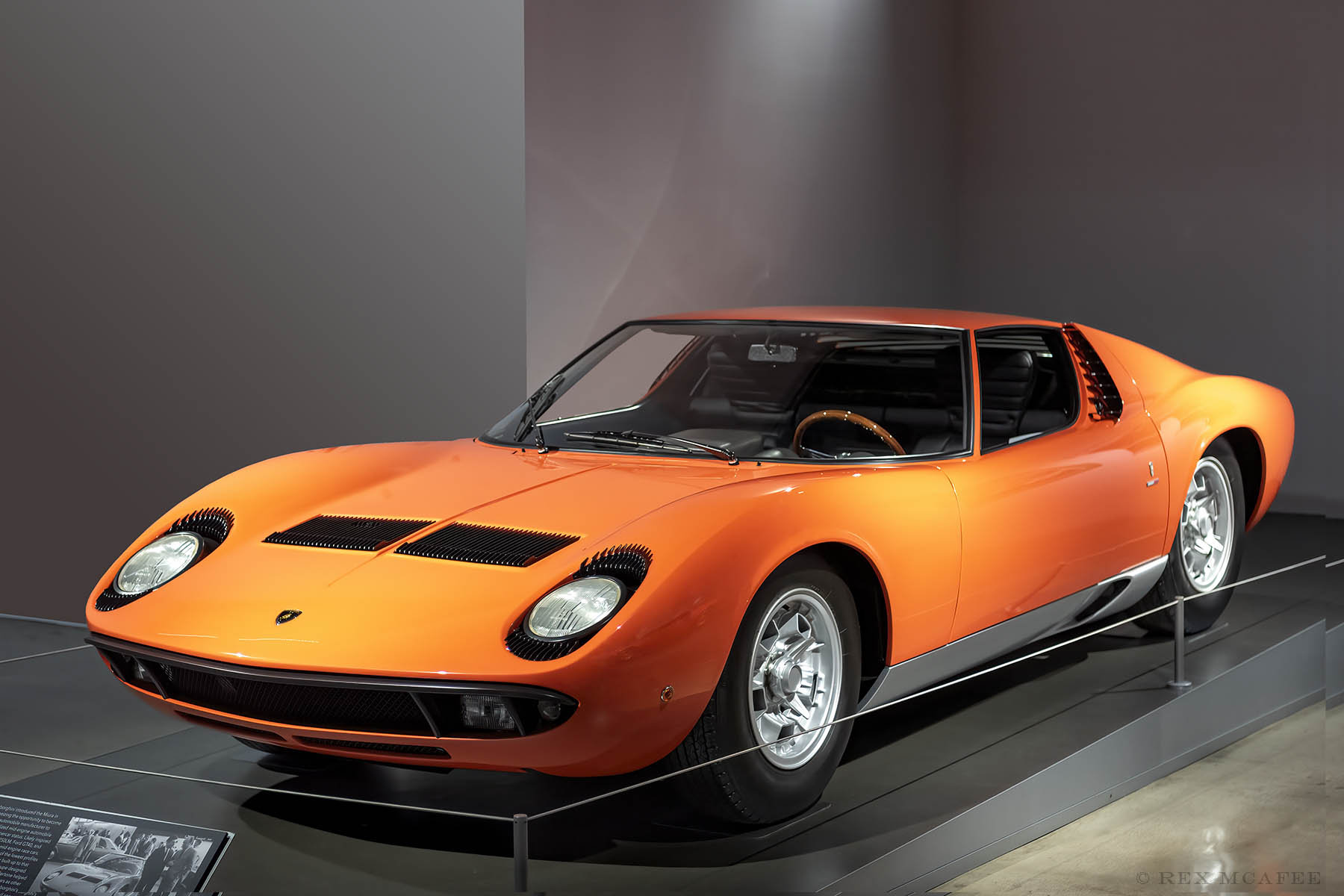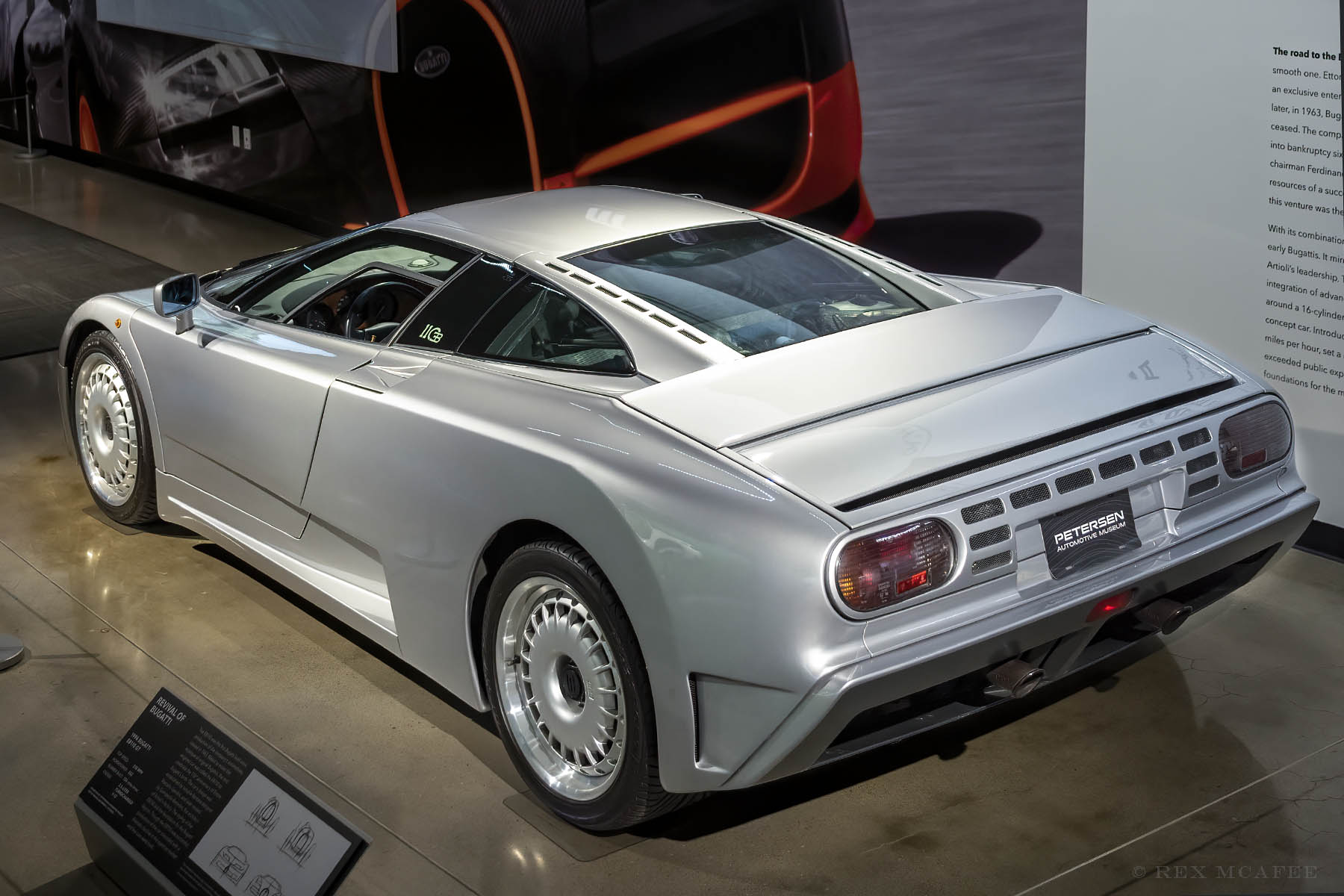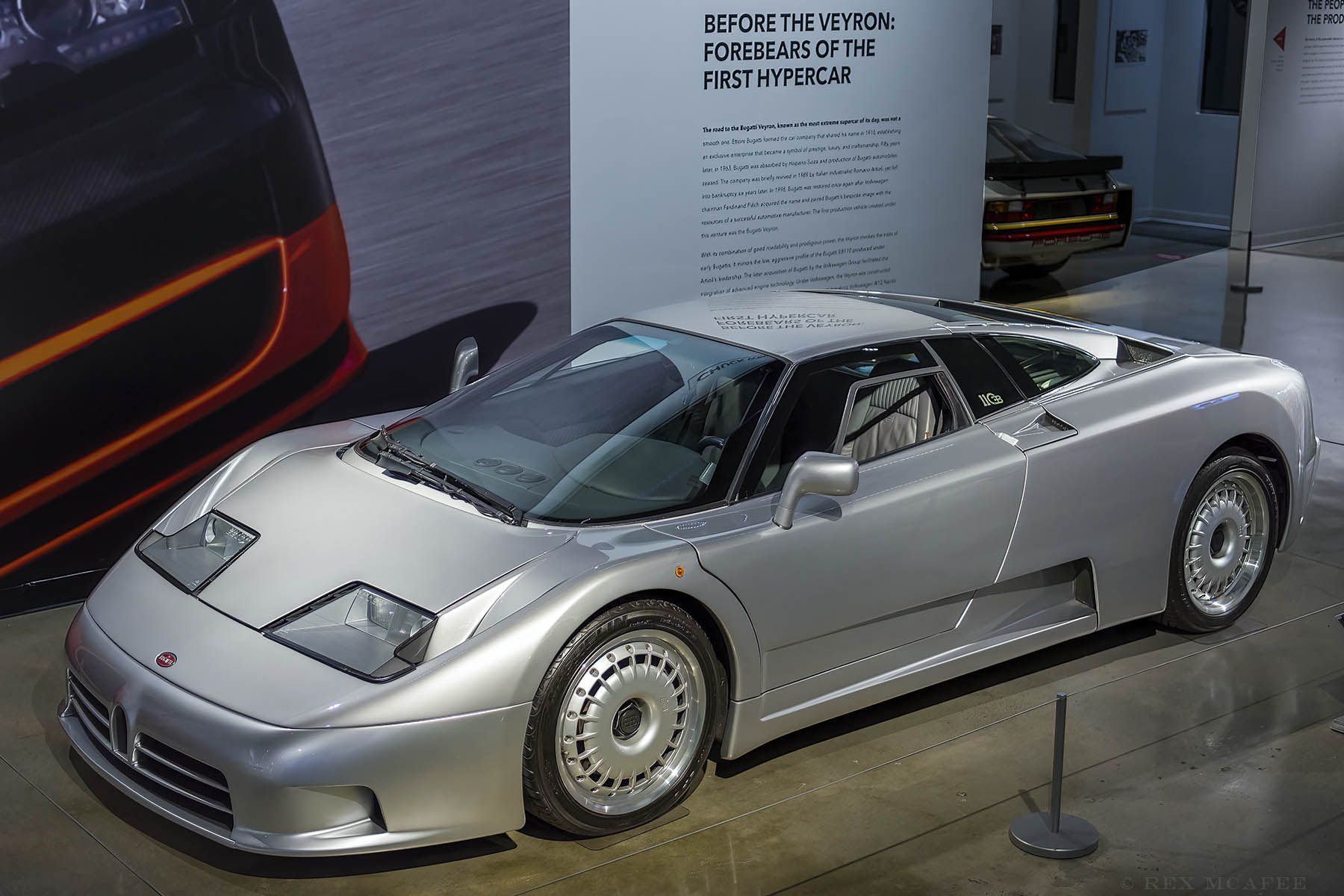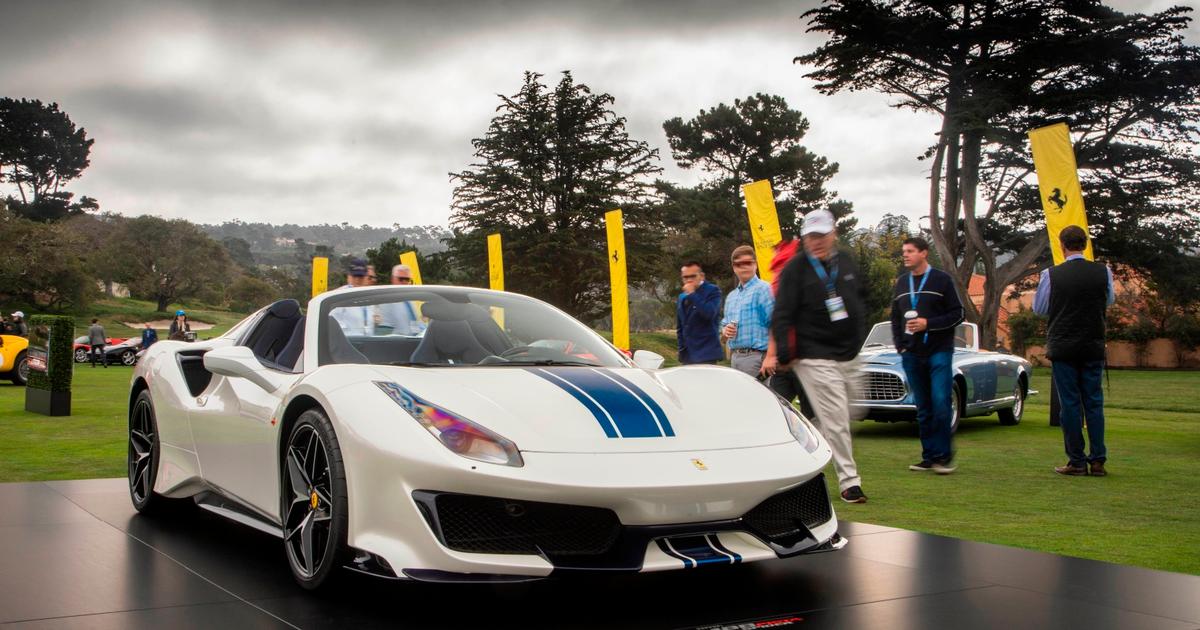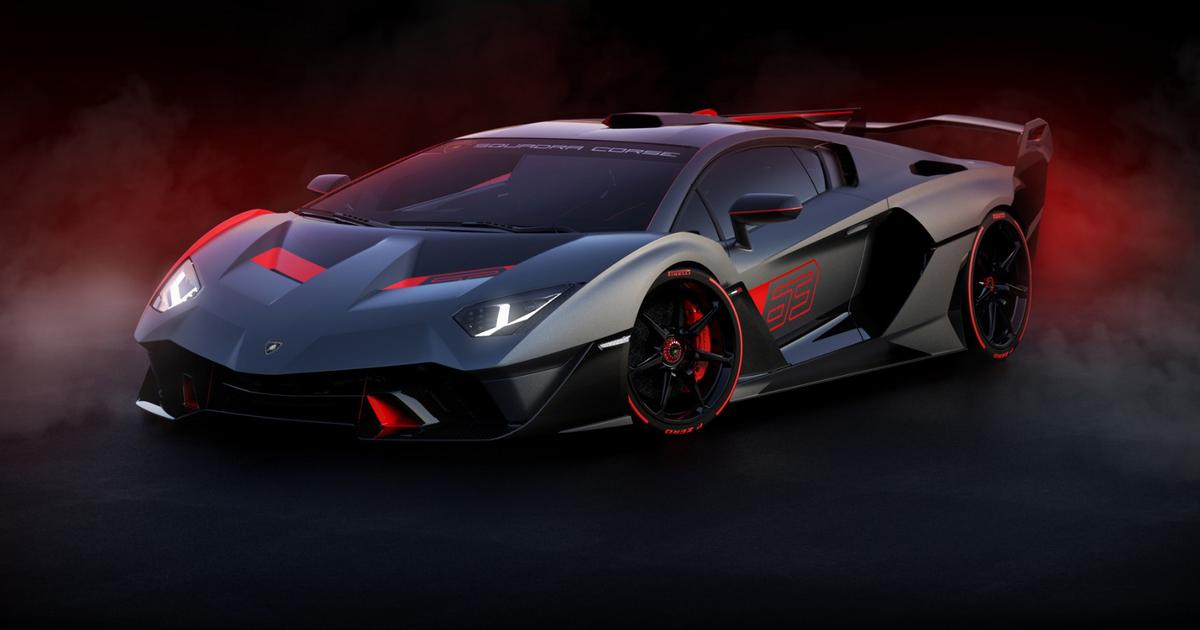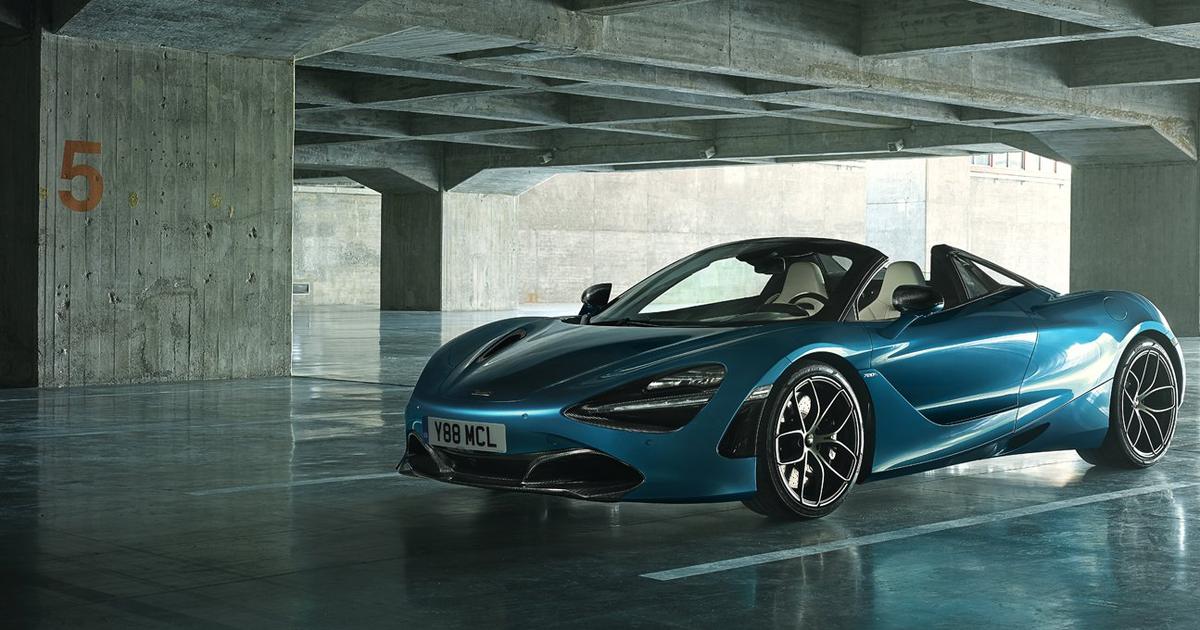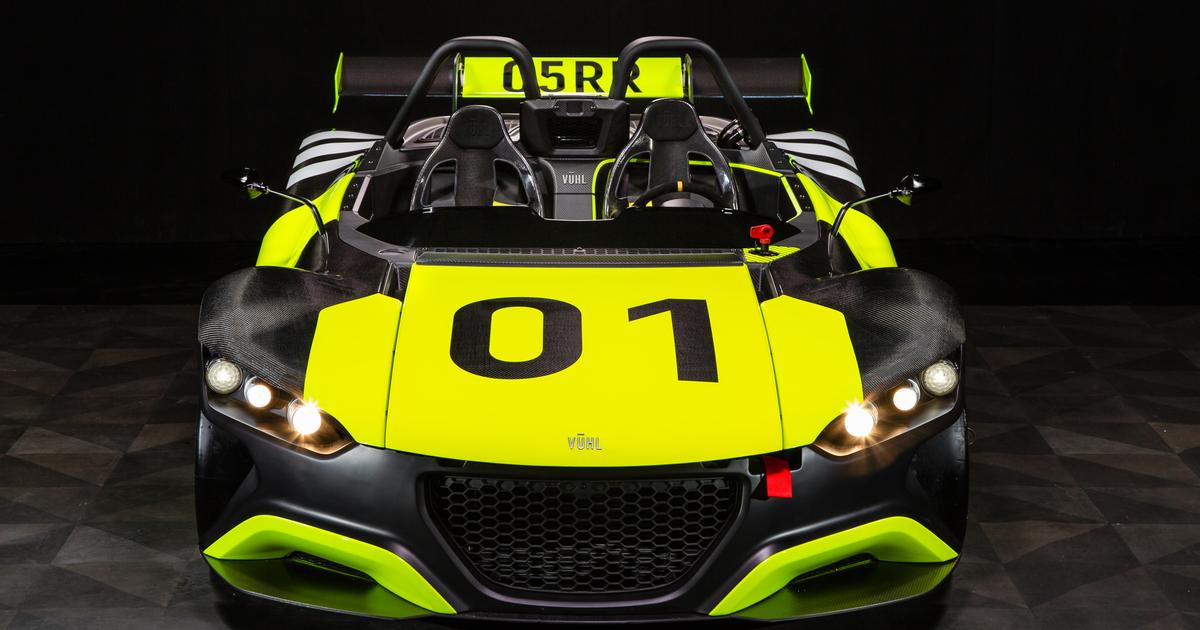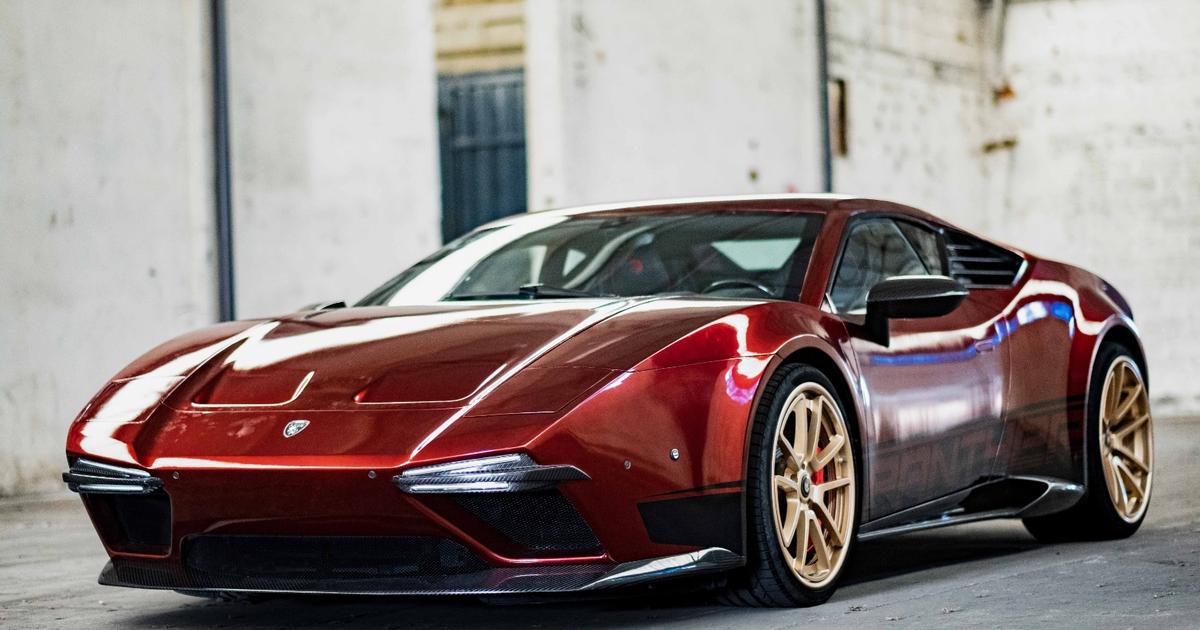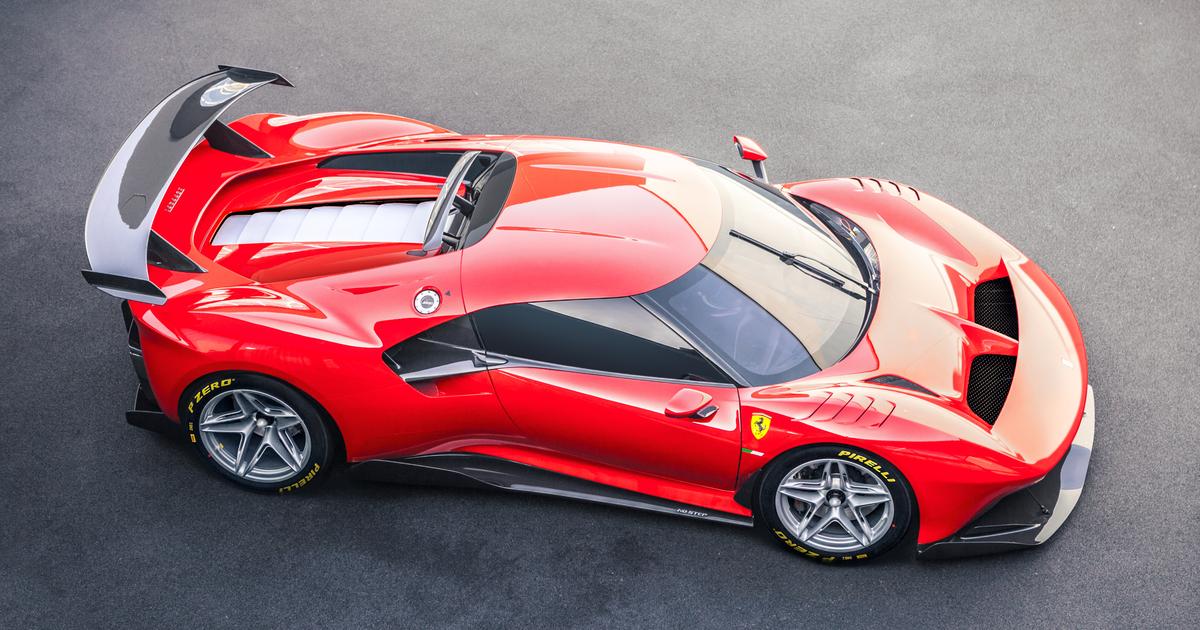Supercar, Hypercar, and now Megacar; is a nuclear-powered Gigacar next? Back in the early 1980s, Road & Track magazine published Exotic Cars, a series of special edition magazines reviewing the era’s wildest machines. The cover shots alone were enough to make any warm-blooded teen drool. Rarities like the Lamborghini Countach, RUF Porsche 911 “Yellow Bird” and the Ferrari Testa Rossa all vied for the international “Bad Boy” title and a shot to reach 200 mph. Oh…and remember the Mercedes AMG “Hammer”? Sorry Lewis Hamilton, but that was the original “Hammer Time”!
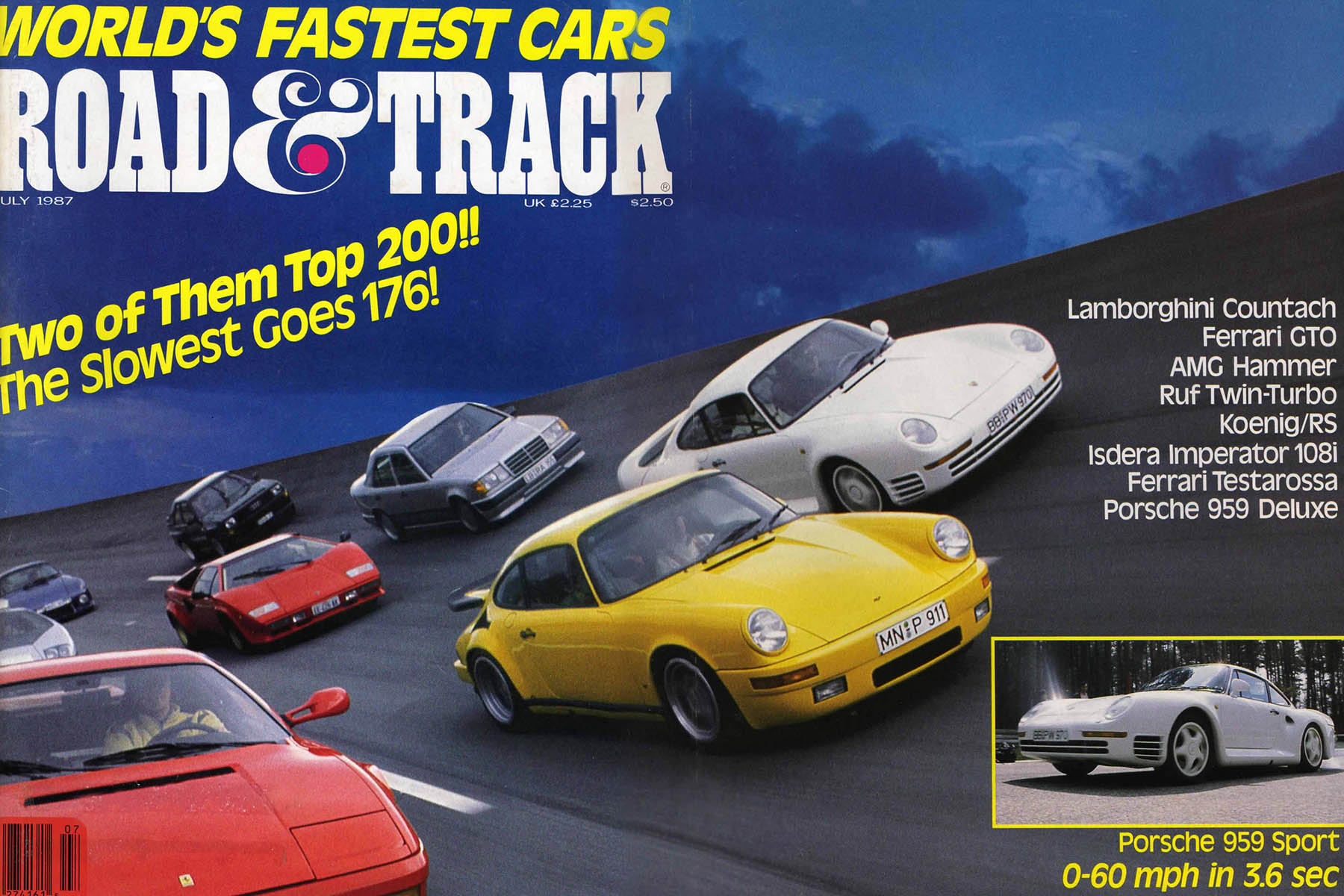
Fast forward a few decades, and while Pirelli P7 tires and Alpine stereos are long forgotten memories, the feeling of awe you get when looking at one of these machines remains the same; hence the true essence of what defines them, regardless of which prefix you use. I’m here at the Petersen Automobile Museum in Los Angeles to feast my eyes on a number of these exotics that span close to half a century. From the Lamborghini Miura, considered by many to be the first modern supercar, to the Hennessey Venom F5 currently being tuned to exceed the 300-mph barrier, they are all here for a brief moment as part of their Supercar and Hypercar exhibits. So, just what does it take for an automobile to become a chapter in today’s supercar landscape?
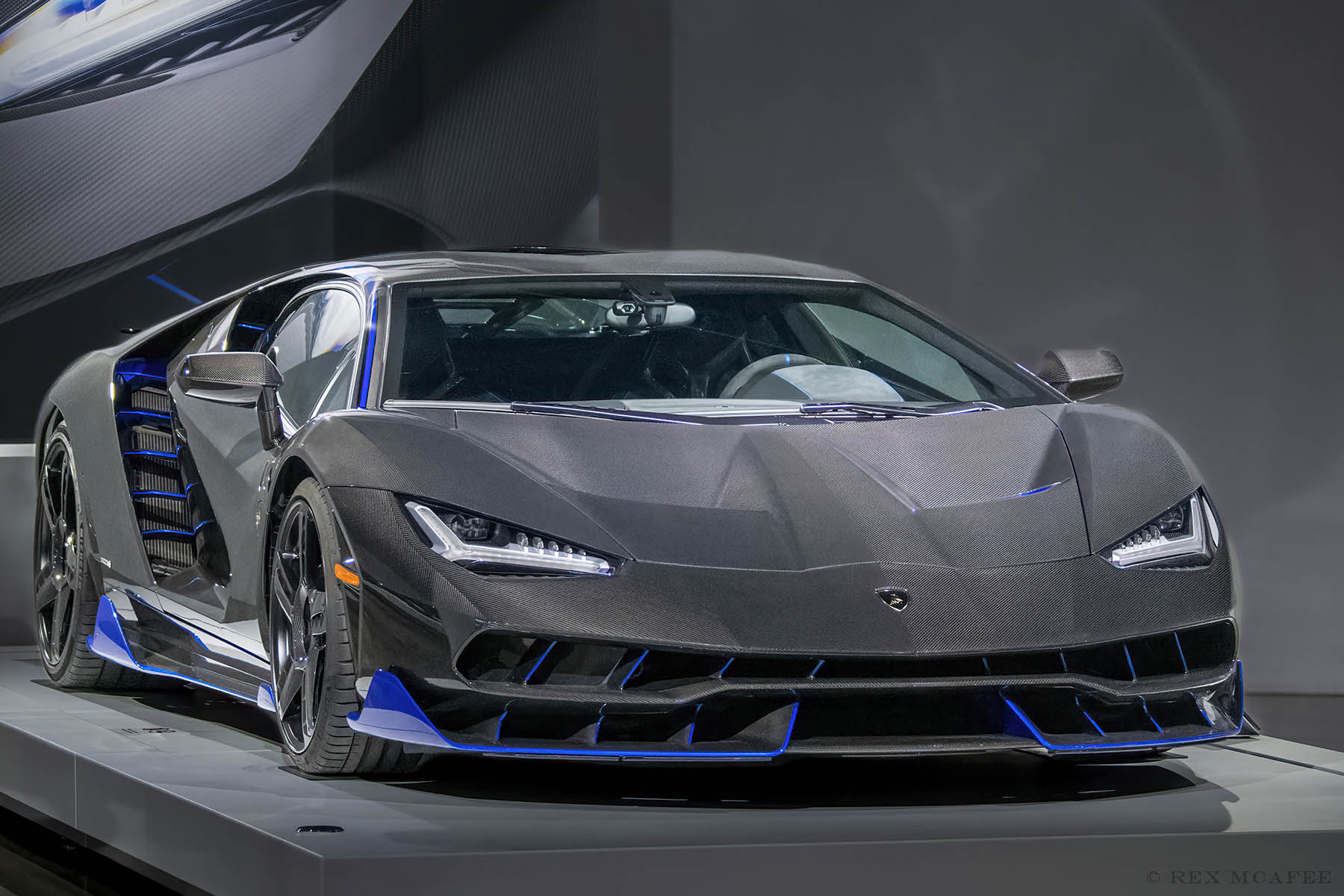
For starters, ridiculous face-deforming acceleration. Remember when 0-60 under 5 seconds was a big deal? Those days are long gone; hell, the babysitter can do that in a beat-up Tesla. Baller status now requires 0-60 between 2 and 3 seconds. Rimac’s Concept One uses all-wheel drive via 4 individual electric motors to achieve its aircraft carrier launch. Be prepared to spend some “quiet time” with your owner’s manual as you will need to figure out how to put your car into launch mode (e.g., high beams on, both pedals down, XM radio turned up, and wallet wide open). And I assume you already know your left foot will be idle during shifts? Get used to those paddles controlling your 7-speed dual-clutch transmission (e.g. Koenigsegg Agera).
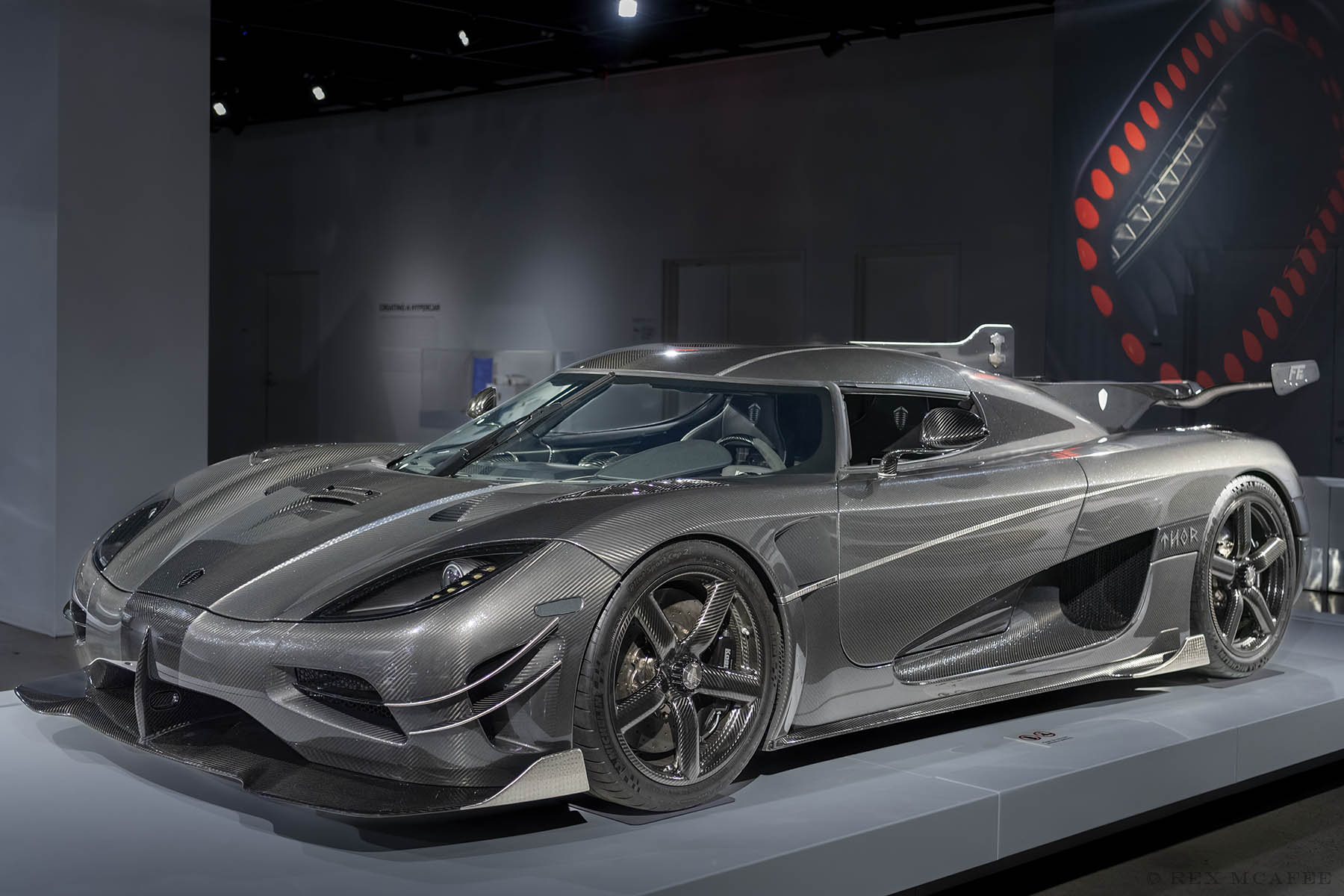
The next requirement is a 200+ mph top speed. How ironic that the fastest “looking” cars of decades past were usually the ones that didn’t make the two-century mark. Put a Countach in a wind tunnel; well…looks can be deceiving. But with the advent of computer modeling, supercar designers can now create something both sexy and slippery. Bugatti’s Veyron did 253 mph back in 2008; mind-blowing at the time but already surpassed by its successor, the Chiron. Now the challenge becomes how to design something with a low drag coefficient that doesn’t abandon the brand’s signature styling. How the Bugatti Veyron achieved this with its front grille inspired by their 1924 Type-35 racer is ingenious. With today’s predominant mid-engine layout with side body air-ducts, even a new Corvette C8 coming up in your rear-view mirror can keep you guessing for a few seconds.
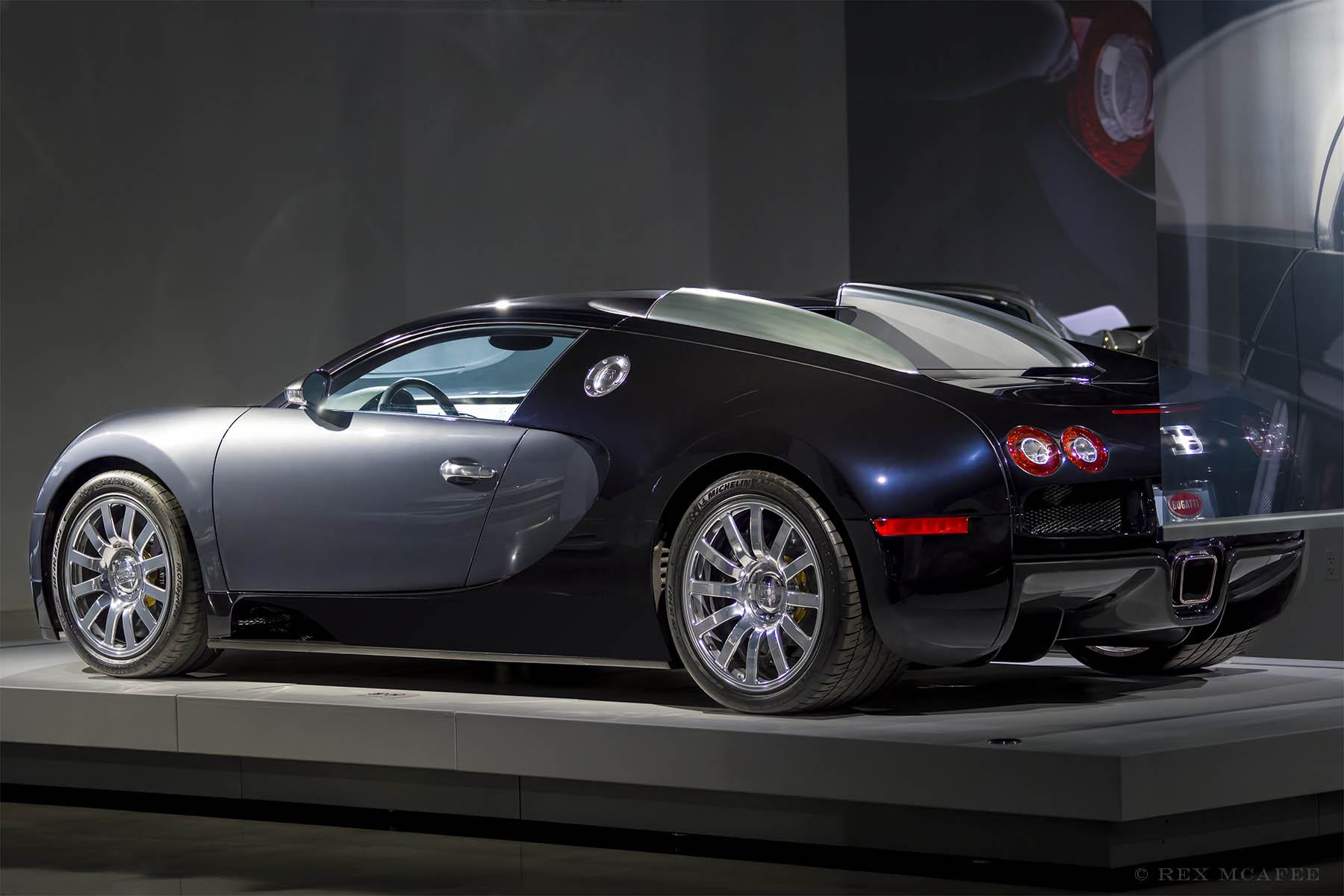
Spanning over half a century, here are some statistics showing the evolution of performance for these iconic machines:
| Car | Acceleration (sec.) 0-60 mph | Top Speed (mph) | Output (hp) |
| 1968 Lamborghini Miura | 6.7 | 174 | 375 |
| 1974 Lamborghini Countach | 5.0 | 179 | 370 |
| 1984 Ferrari 512 BBi | 5.4 | 188 | 335 |
| 1989 RUF Porsche CTR | 4.2 | 213 | 470 |
| 1994 Bugatti EB110 GT | 2.8 | 212 | 553 |
| 2003 Porsche Carrera GT | 3.9 | 205 | 603 |
| 2004 Ferrari Enzo | 3.1 | 221 | 949 |
| 2008 Bugatti Veyron 16.4 | 2.5 | 253 | 1001 |
| 2011 Pagani Huayra | 2.8 | 238 | 730 |
| 2011 Koenigsegg Agera R | 2.8 | 284 | 1341 |
| 2015 Rimac Concept_One | 2.6 | 221 | 1088 |
| 2015 Porsche 918 Spyder | 2.5 | 214 | 875 |
| 2017 Lamborghini Centenario | 2.8 | 217 | 760 |
| 2019 NIO EP9 | 2.7 | 195 | 1360 |
| 2021 Hennessey Venom F5 | 2.6 | 311* | 1817 |
(* Final testing is still in progress as of the time of this article.)
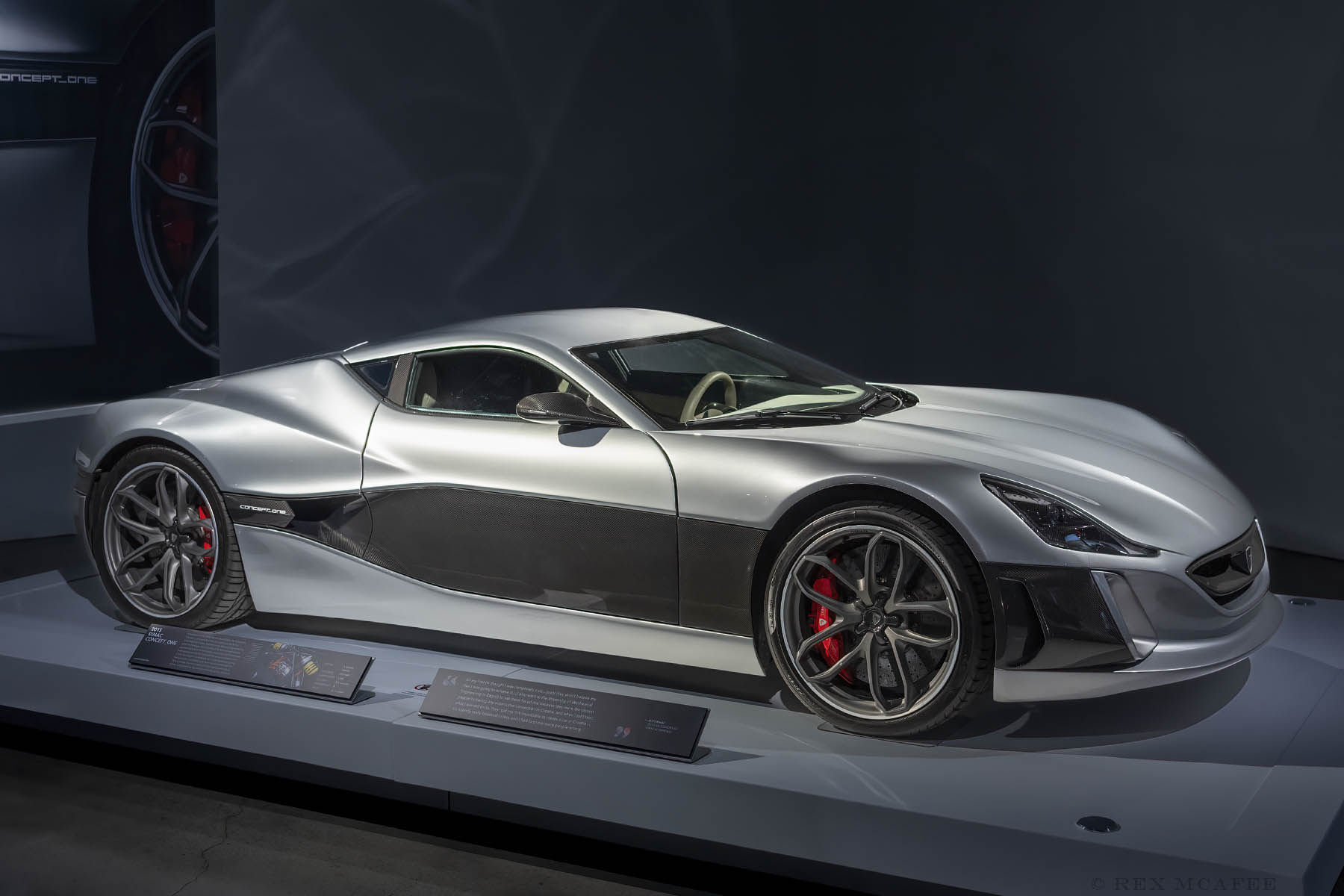
And then there’s styling. Exotic lovers have always demanded something outrageous and provocative. Listen, do you want your car valeted in front of the casino or not! The bigger the blind spot, the better. Side view mirrors that should have “Wide Load” flags hanging off them are the new norm (thank Ferrari for starting that trend in the 1980s with its Testarossa). Add a few diffusers, winglets, and under-body venturis and now you can tell your friends “Yeah…it has so much downforce that it can drive upside-down at 175mph.” Predictably, brands like Ferrari, Bugatti, and Lamborghini lean more on evolution than revolution for styling. Others like Koenigsegg use an engineering “clean sheet” approach, while Pagani threads the needle between art and technology like no other.
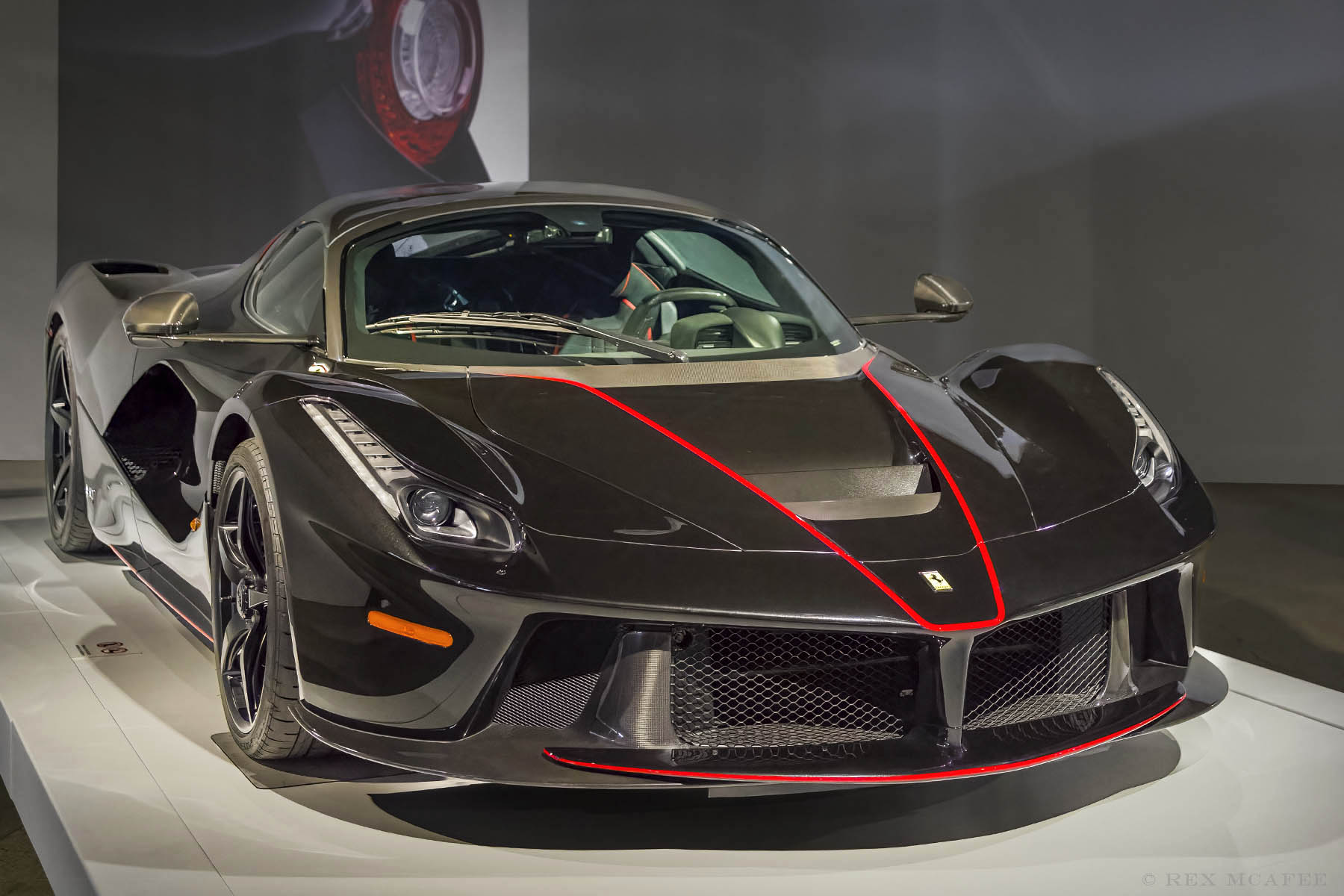
But performance alone isn’t the only thing that launches a vehicle into the mythical Hypercar ether. Exclusivity is paramount as these cars are normally offered to a very select few worthy of owning such rarities (don’t call us, we’ll call you). Customization and “bespoke options” give this VIP clientele the ultimate buying experience. From changing the direction of the carbon fiber weave to adding a bit more burgundy to the factory red, nothing is dismissed. As for the cockpit, knowing a team of craftsmen sewed your custom-fitted seats in Hermès leather is a great conversation point (see the Pagani Huayra below).
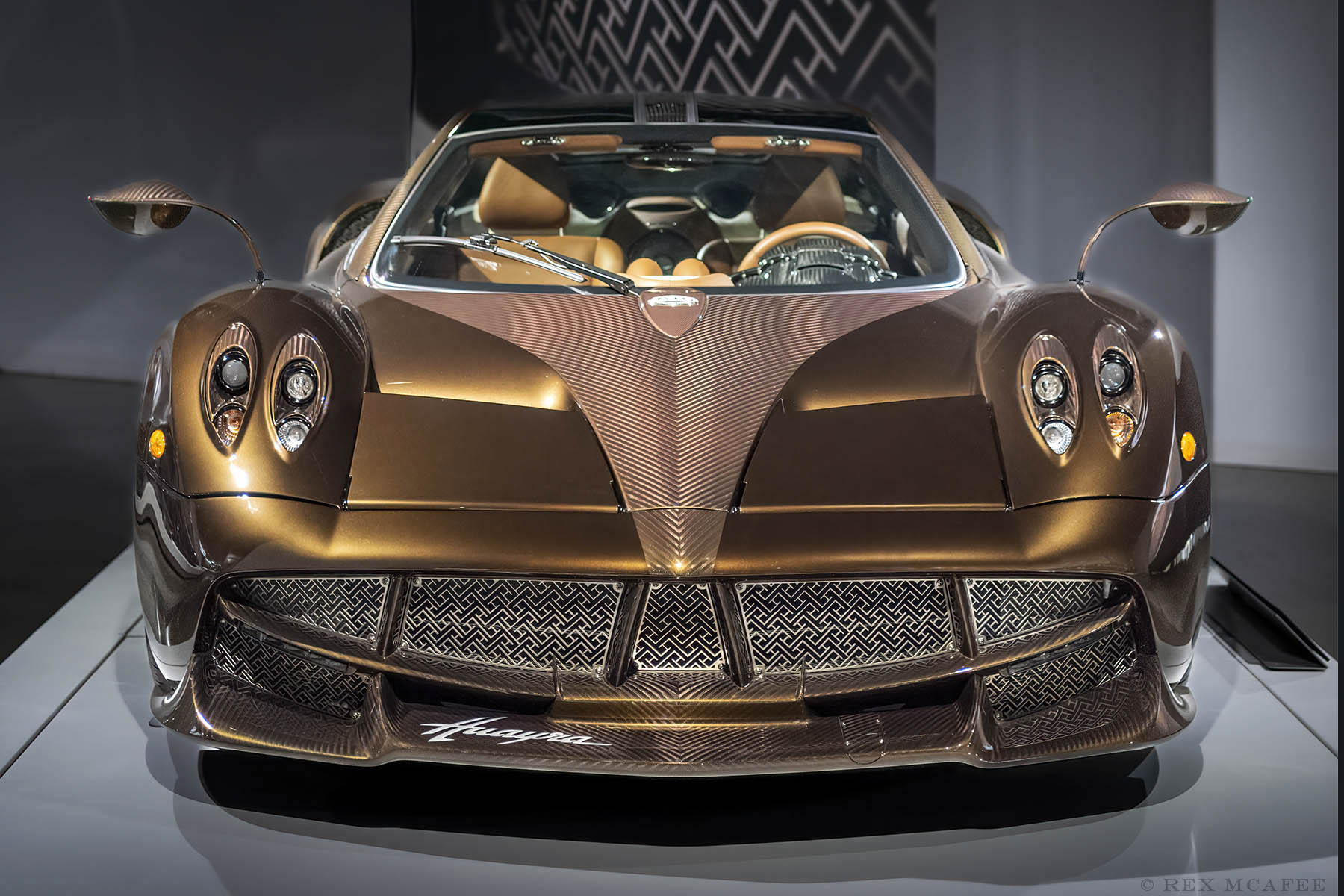
According to the exhibit’s abstracts, Supercars are “exotic machines embodying modern technical sophistication and exceptional performance.” With the introduction of the 2005 Bugatti Veyron, supercar standards were significantly raised; hence the “Hypercar” was born. Then in 2014, Koenigsegg introduced the “Megacar” with their model “One:1” which produced 1,341 hp (or 1 megawatt) per 1 Kg of weight. But please, don’t get overwhelmed with all of the numbers and technology. That “feeling of awe” I mentioned earlier comes from something you can’t measure with a dyno or radar gun. Ferrari, Koenigsegg, and the rest of the list… all men who dared to live by their imagination, and create something out of nothing. Distilled to its core, a Supercar is the manifestation of a dream that overwhelms our senses. The instant you see one for the first time, your brain hesitates as it seeks resolve for what appears to be familiar, yet so foreign. Visually, aurally and of course emotionally, it challenges the mind yielding a moment of wonder we can never forget.
Special thanks to both the team at the Petersen and Kahn Media for their assistance.
Please enjoy the gallery below. All Photos © 2021 Rex McAfee

